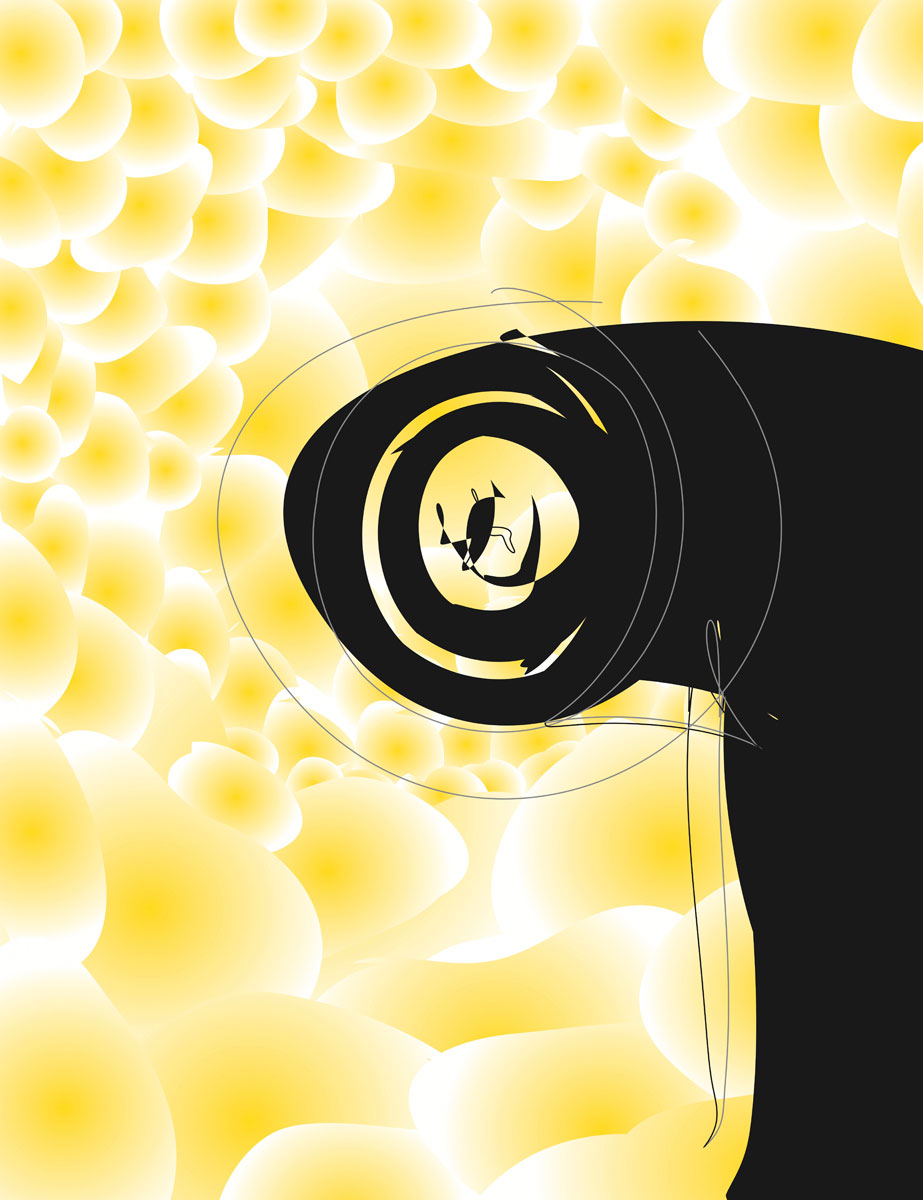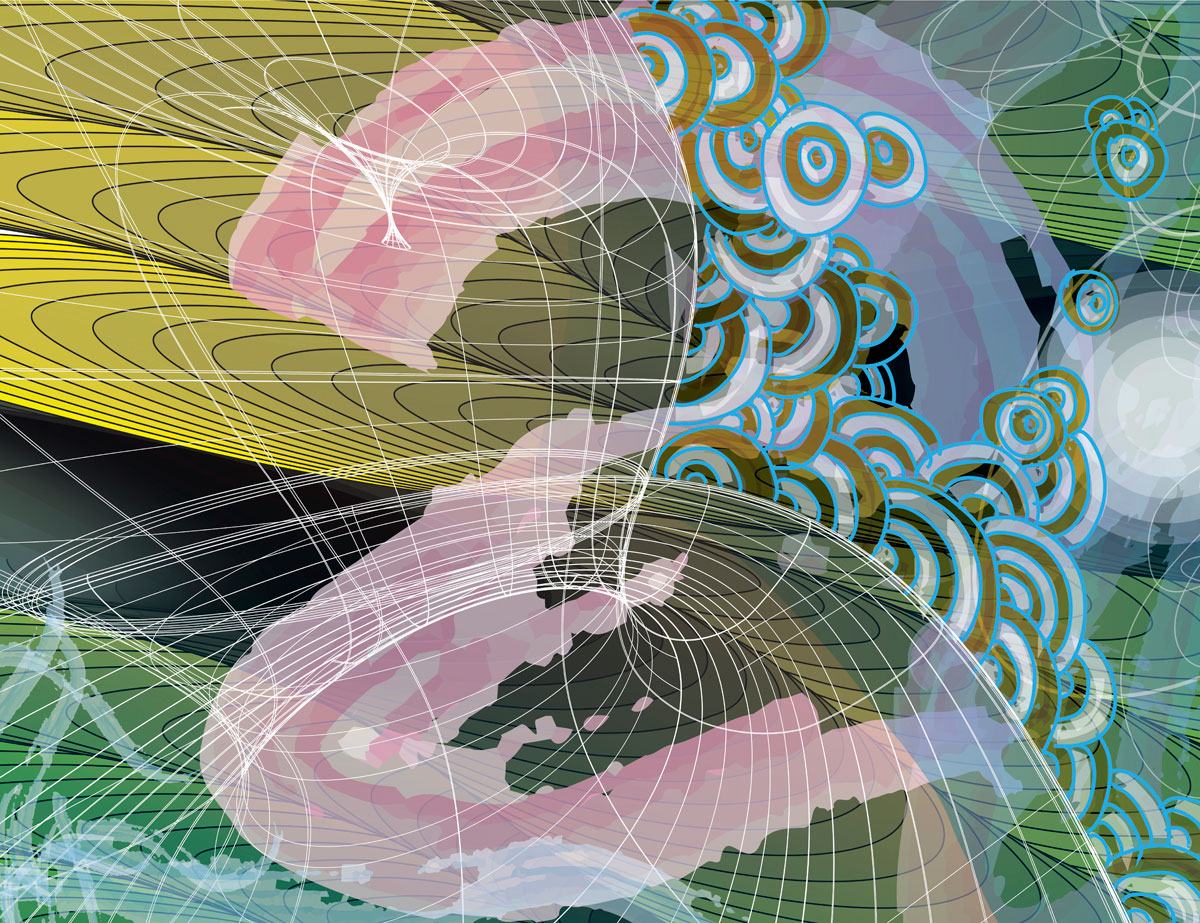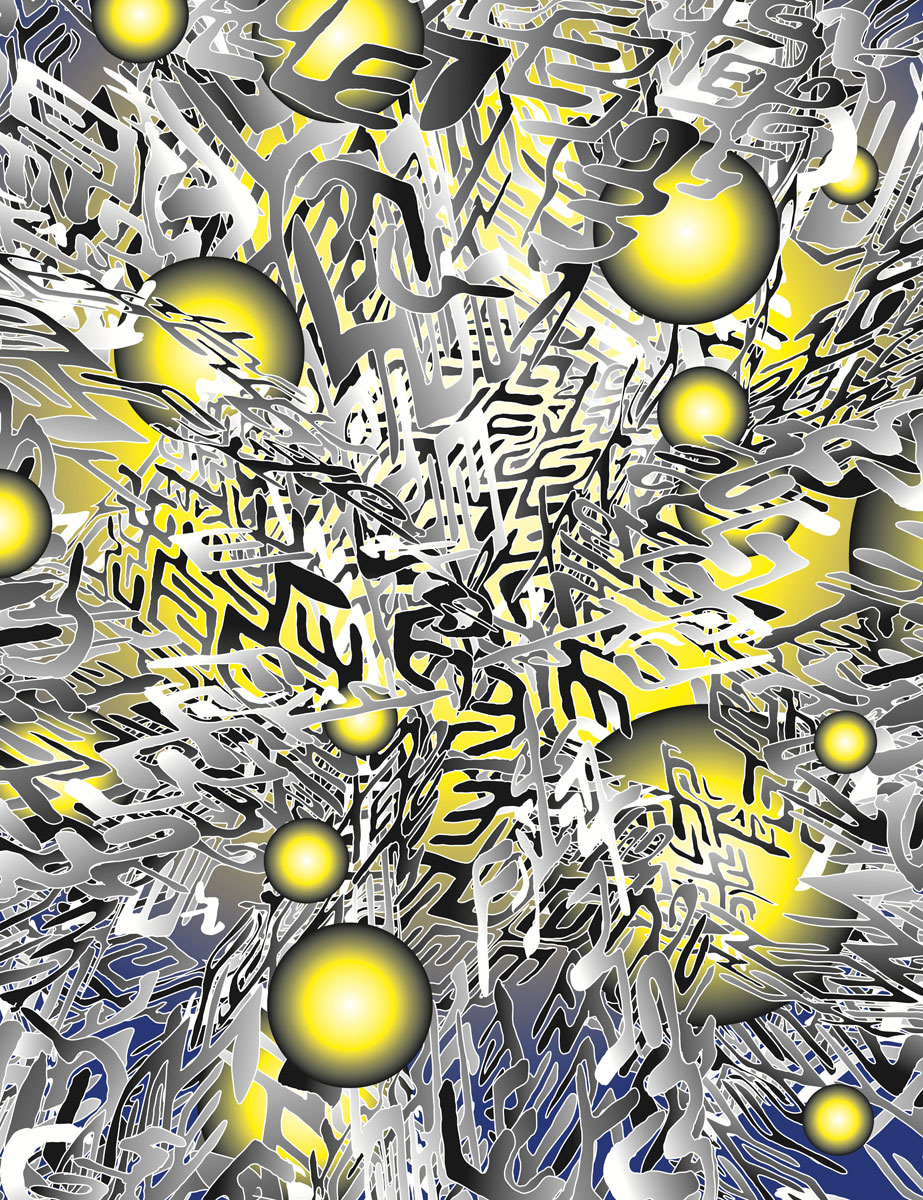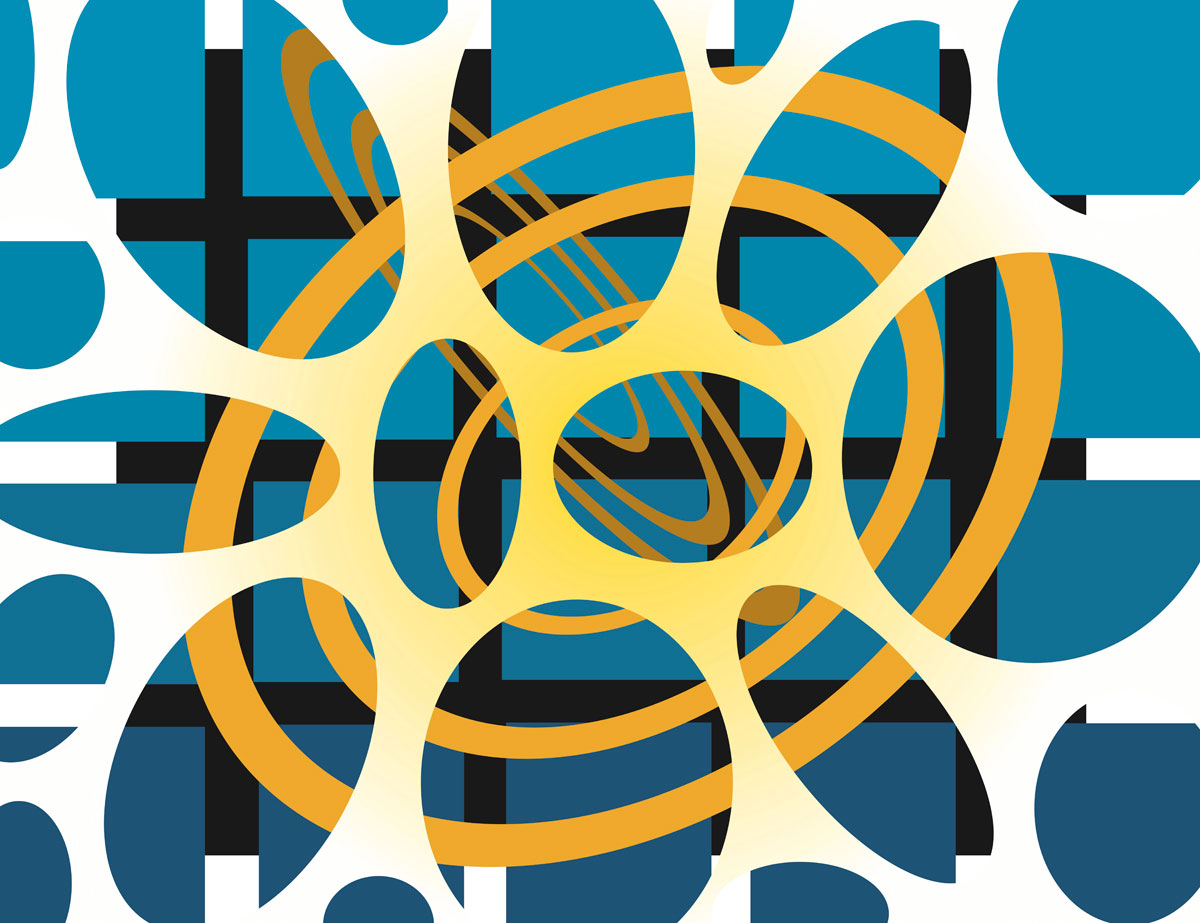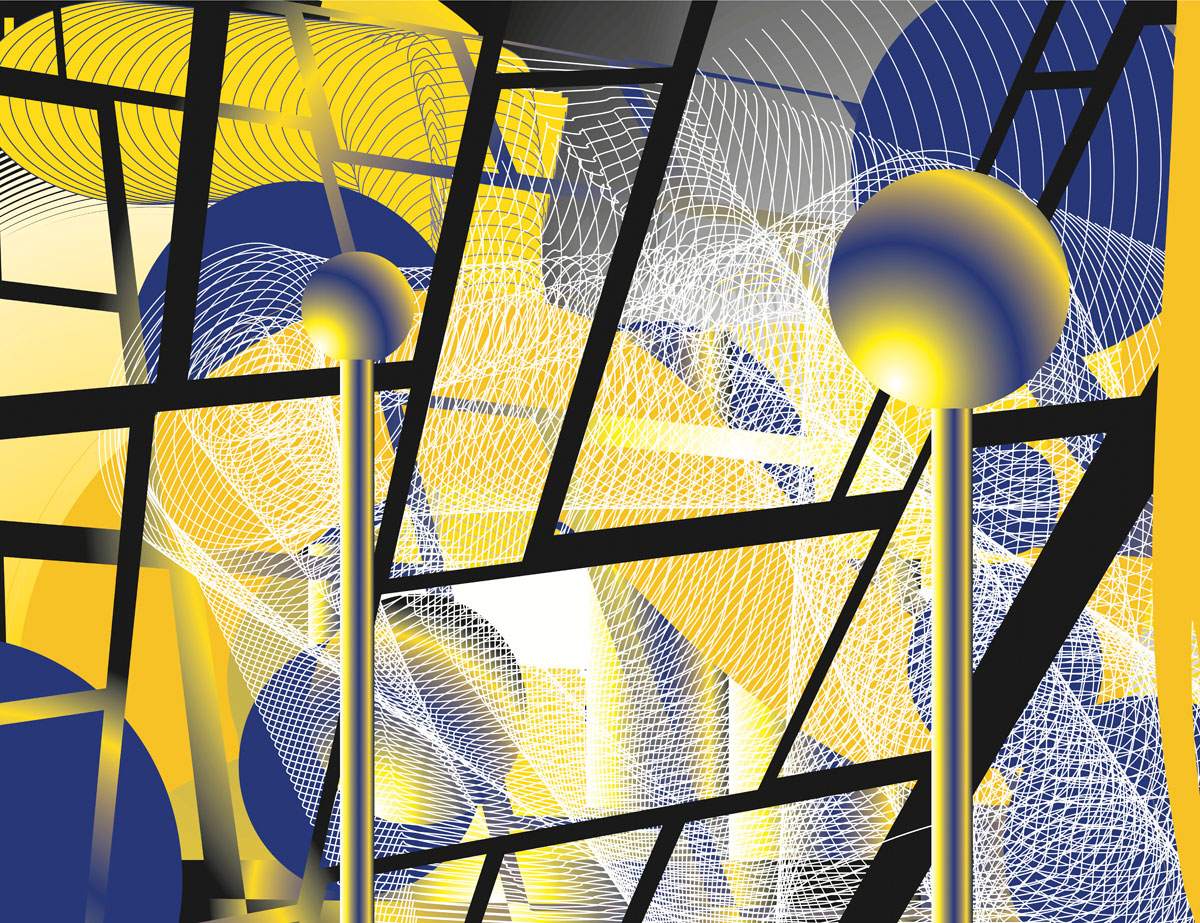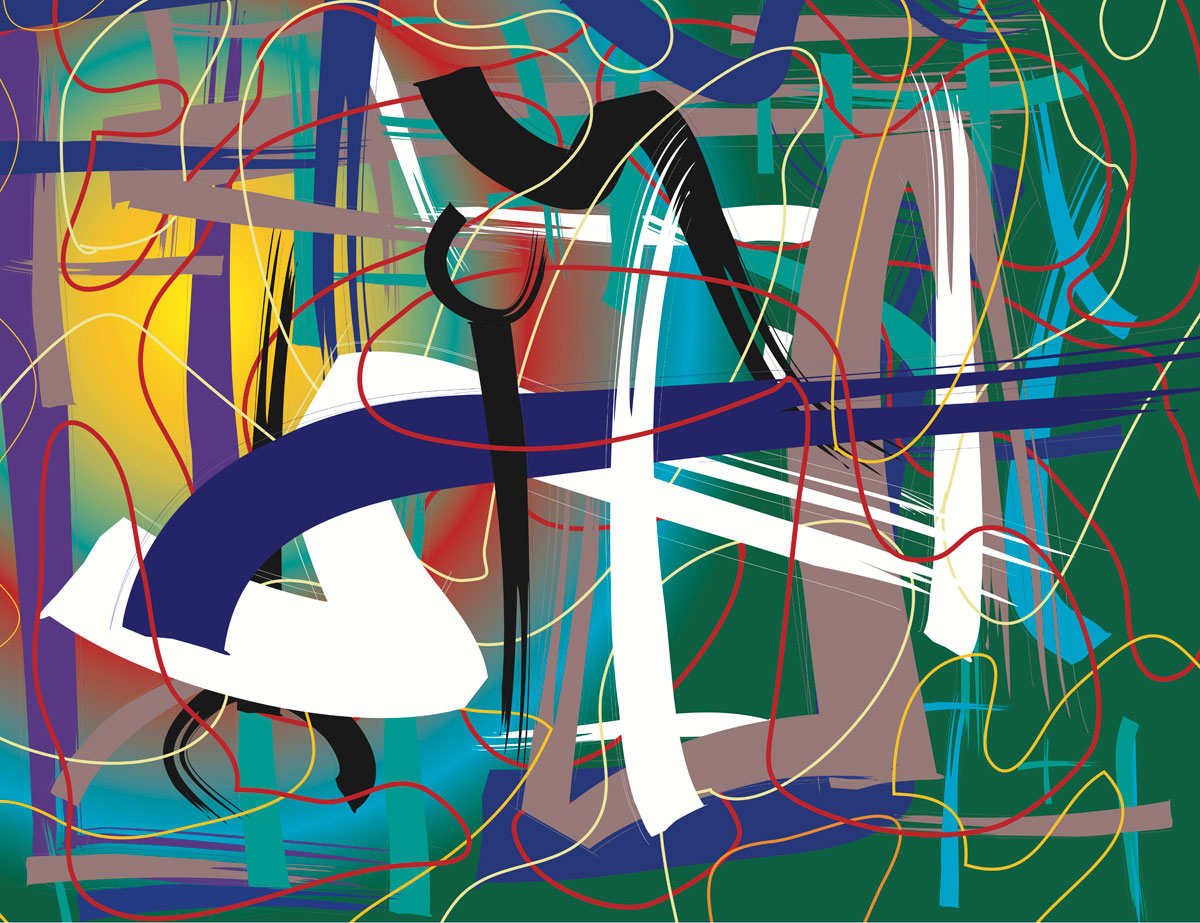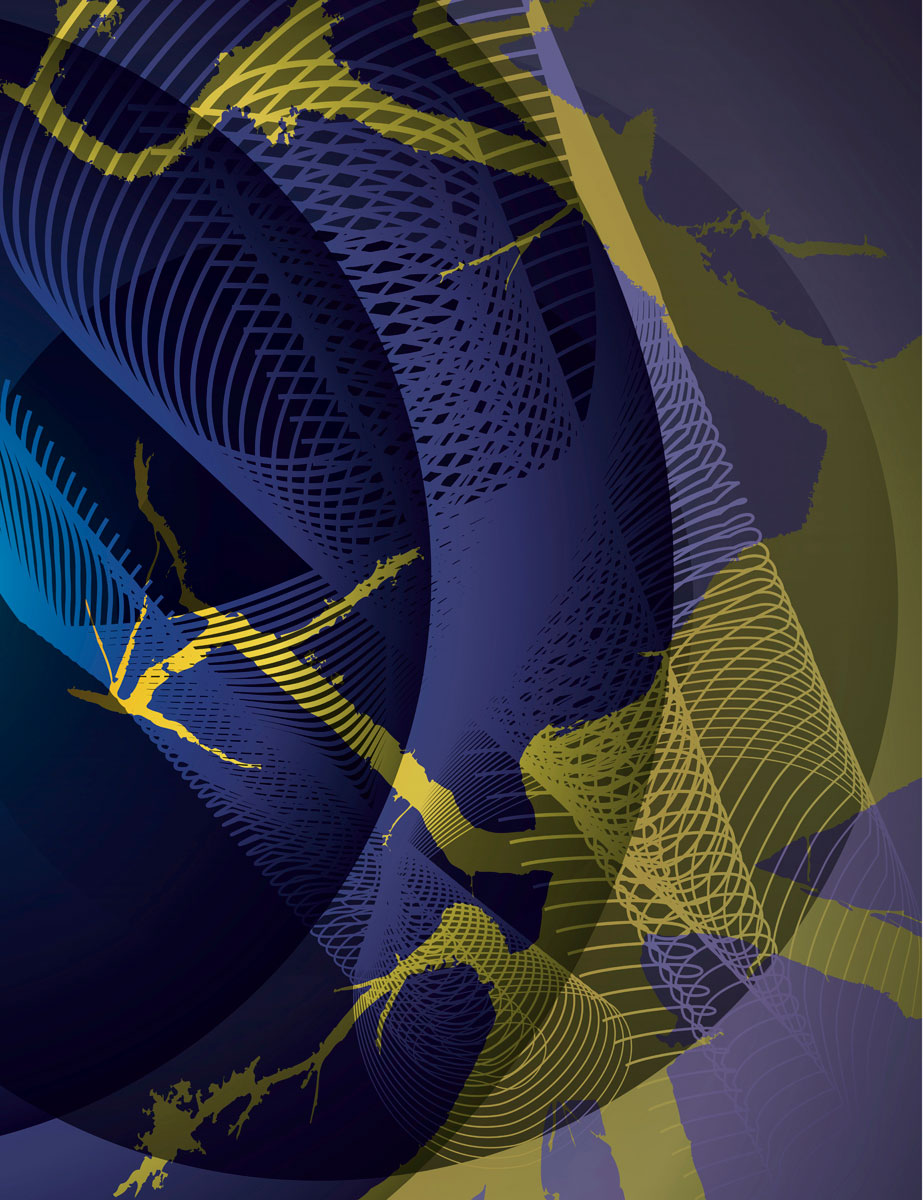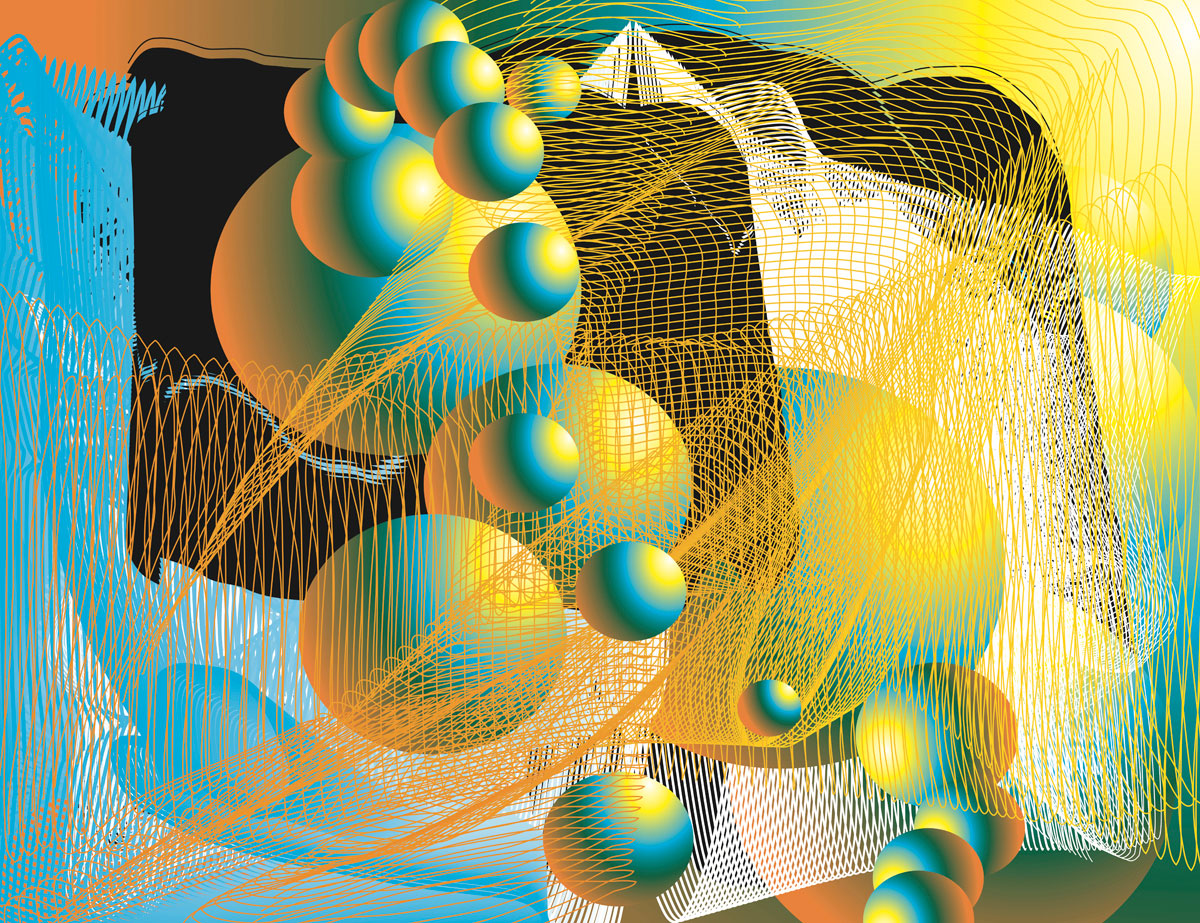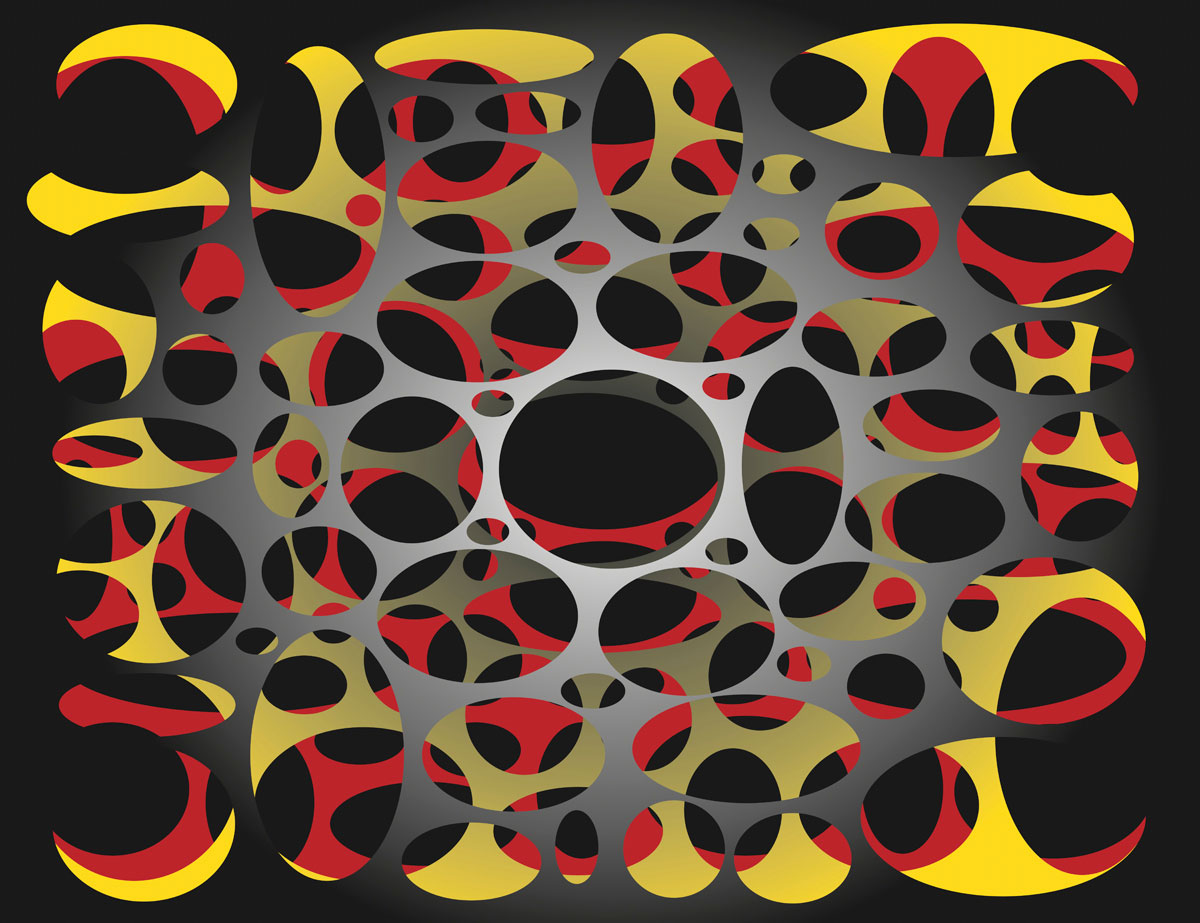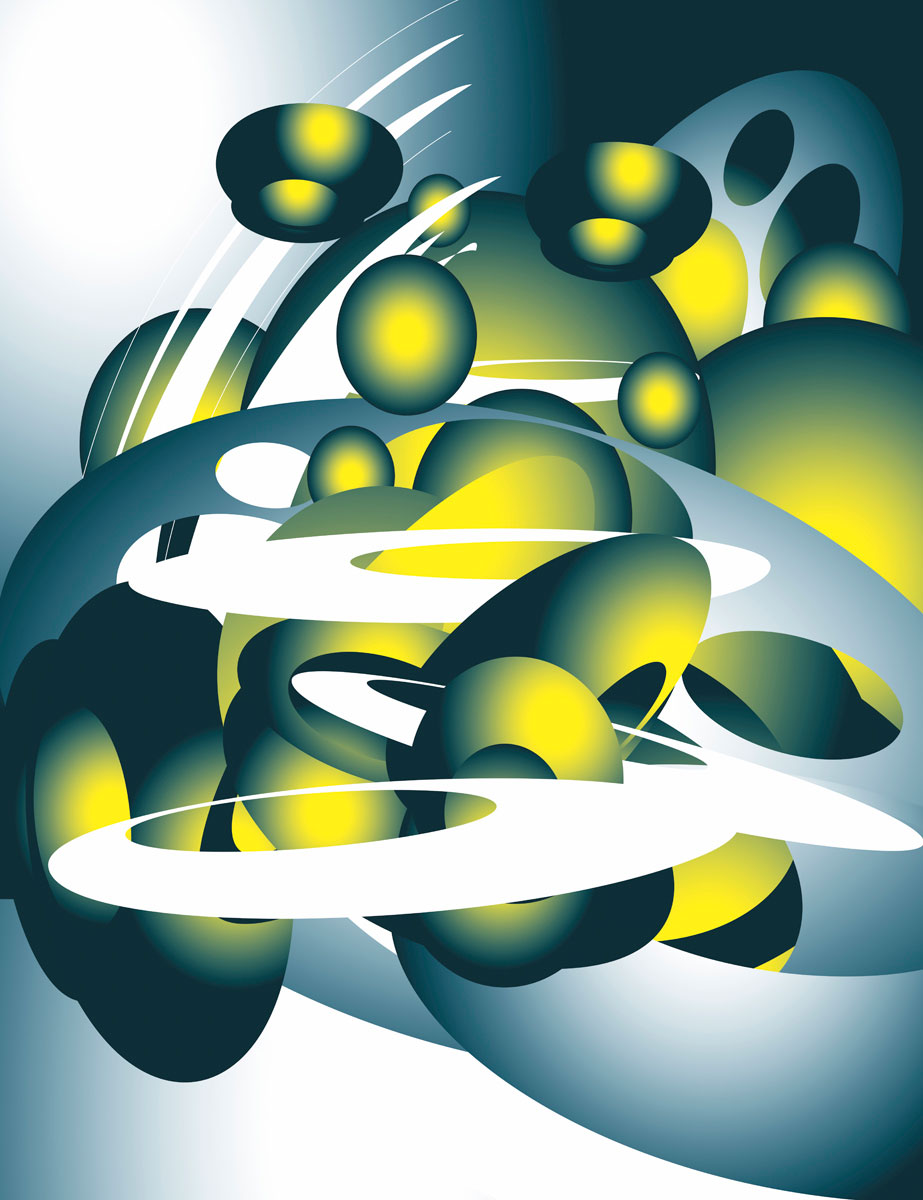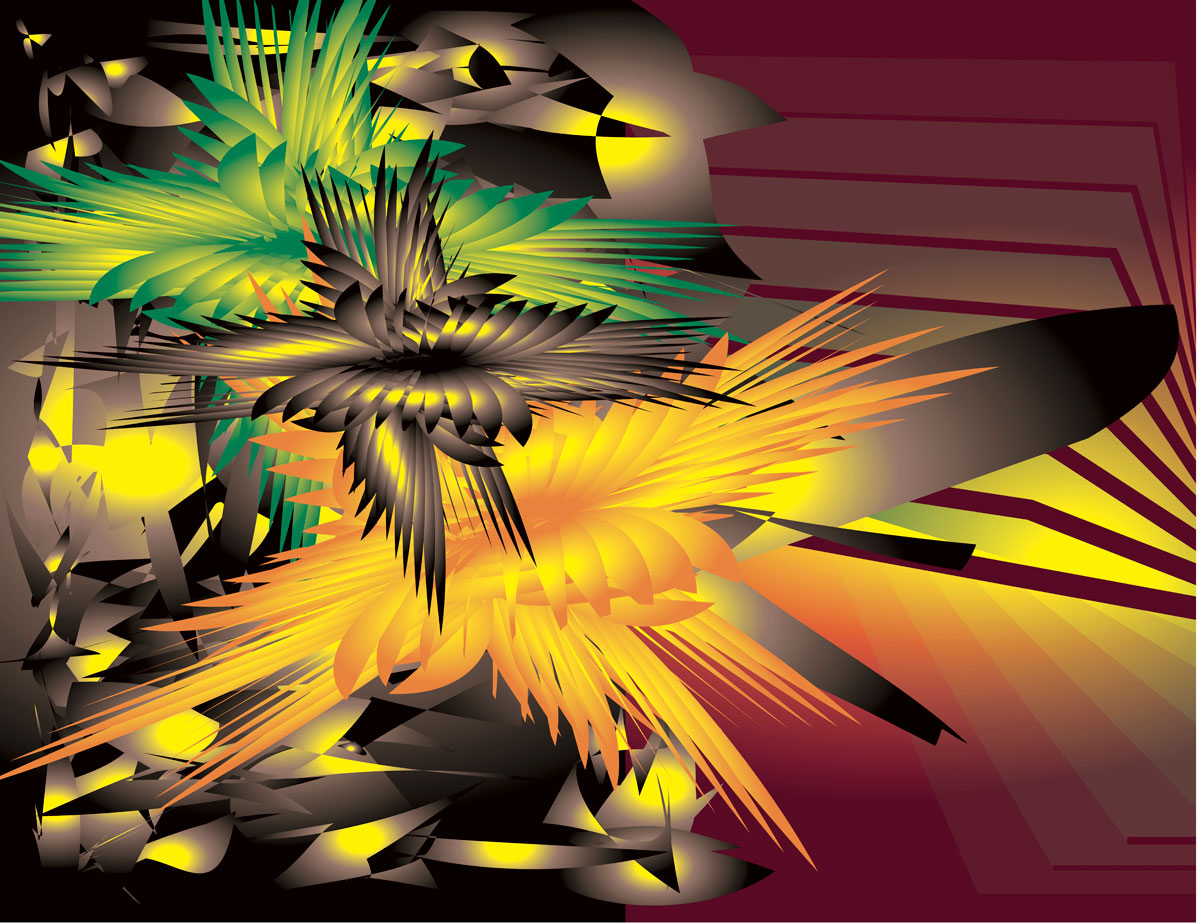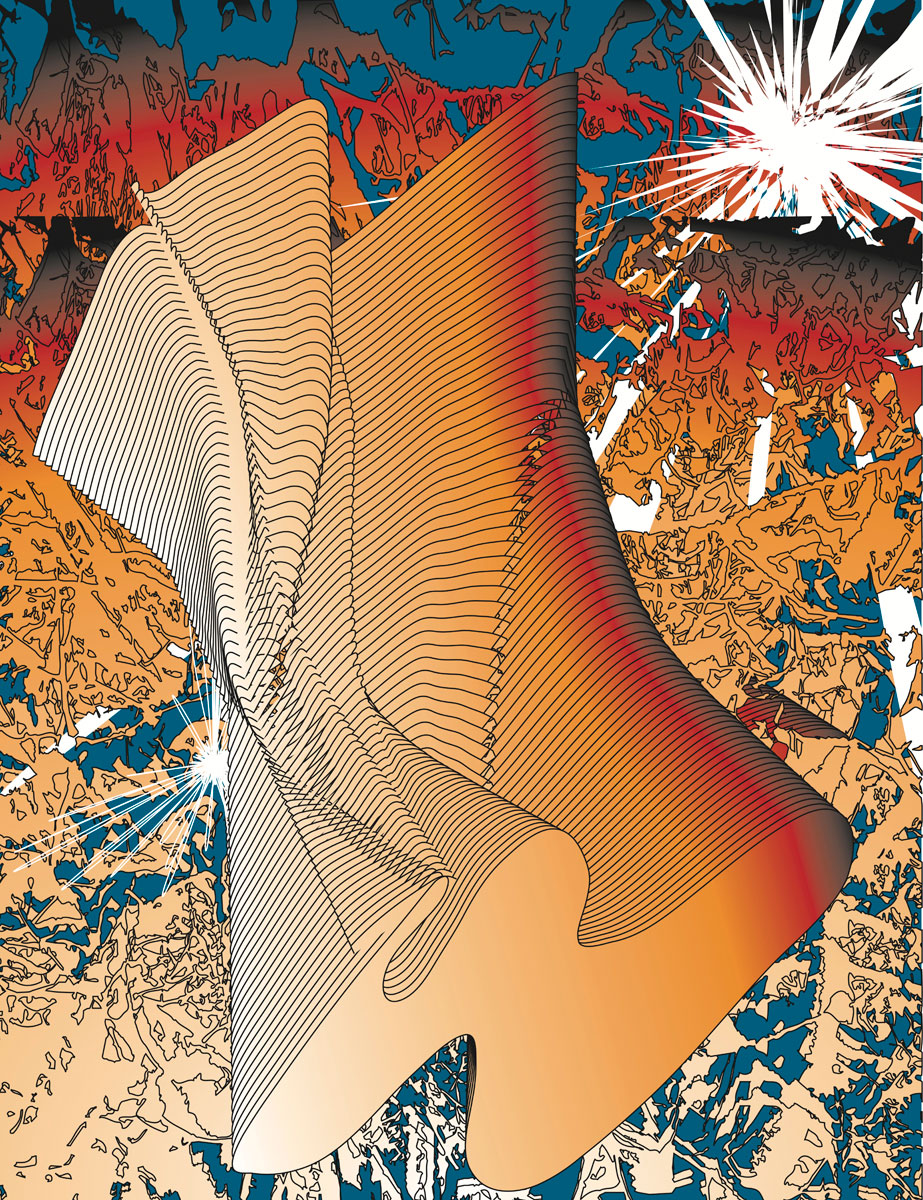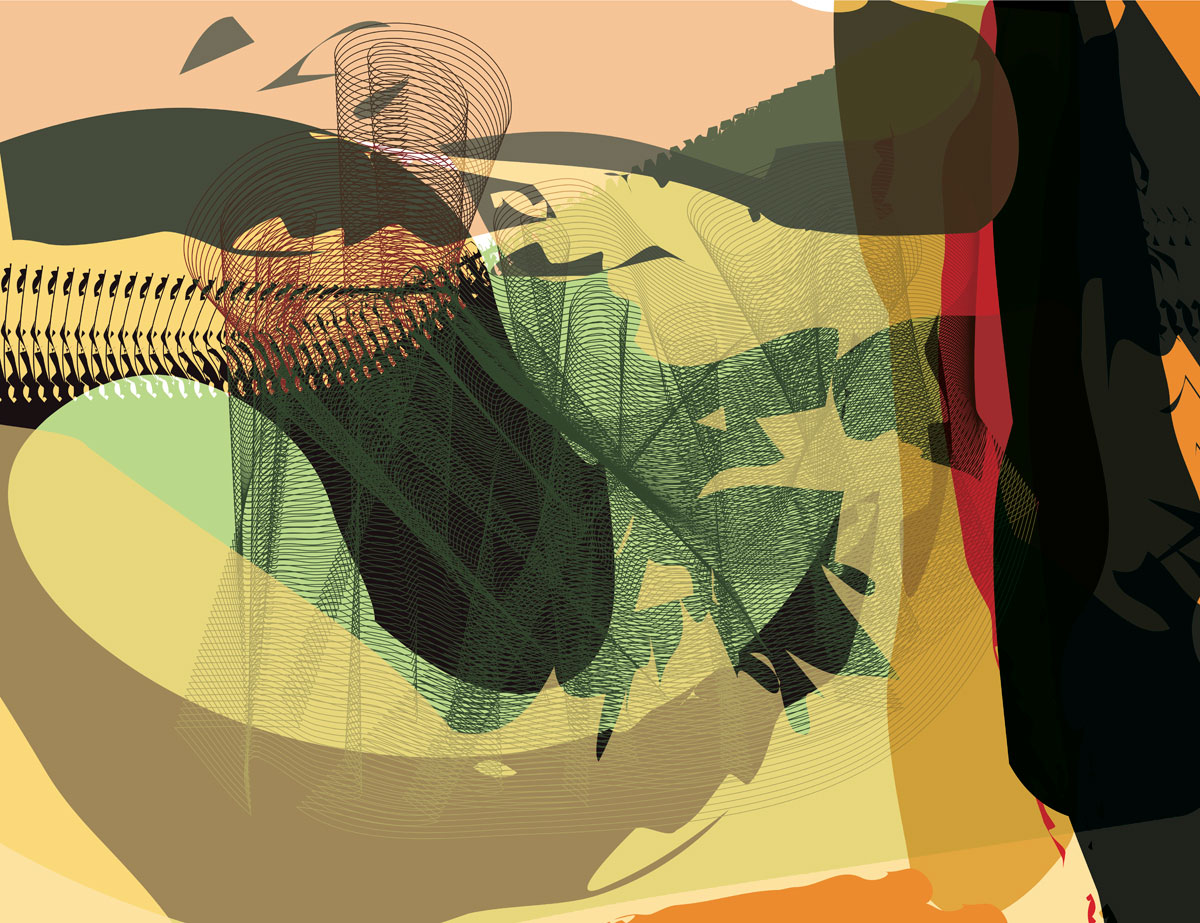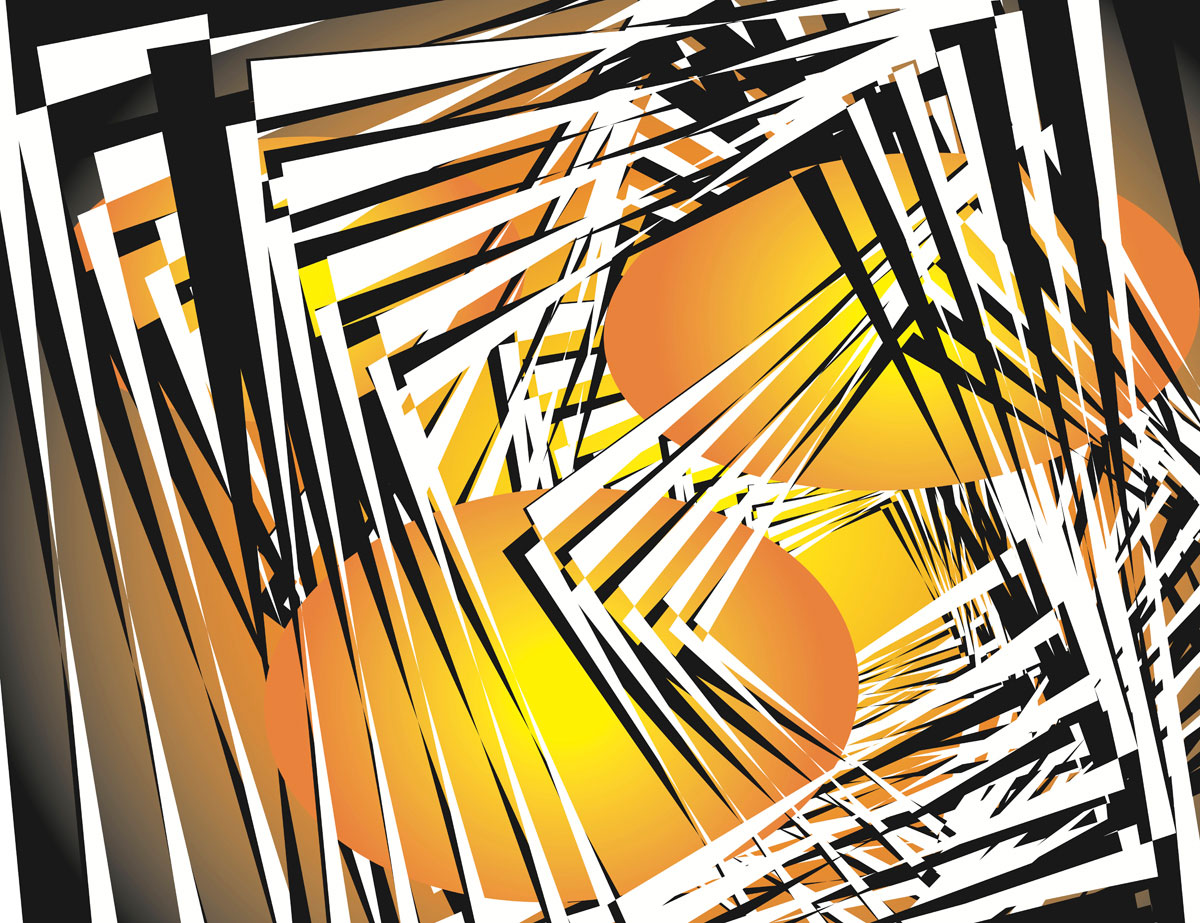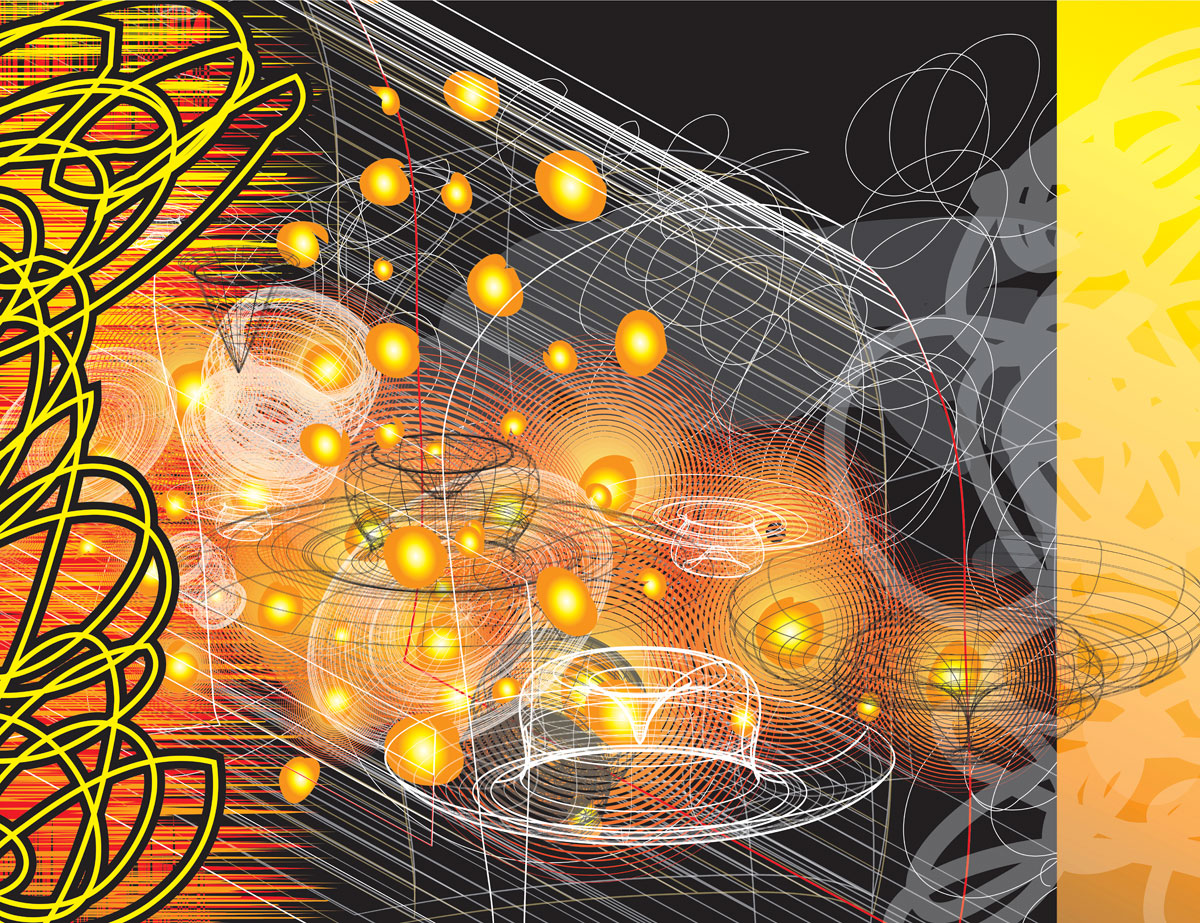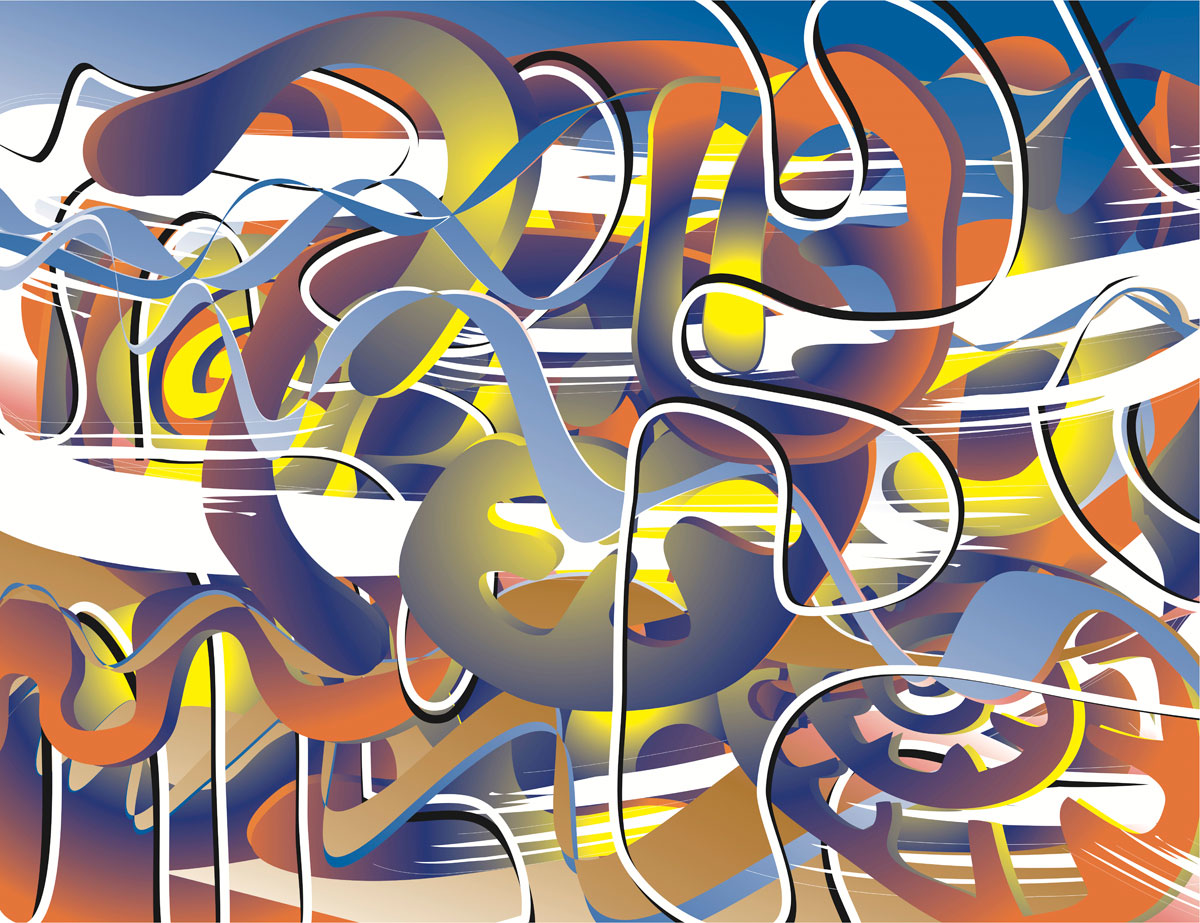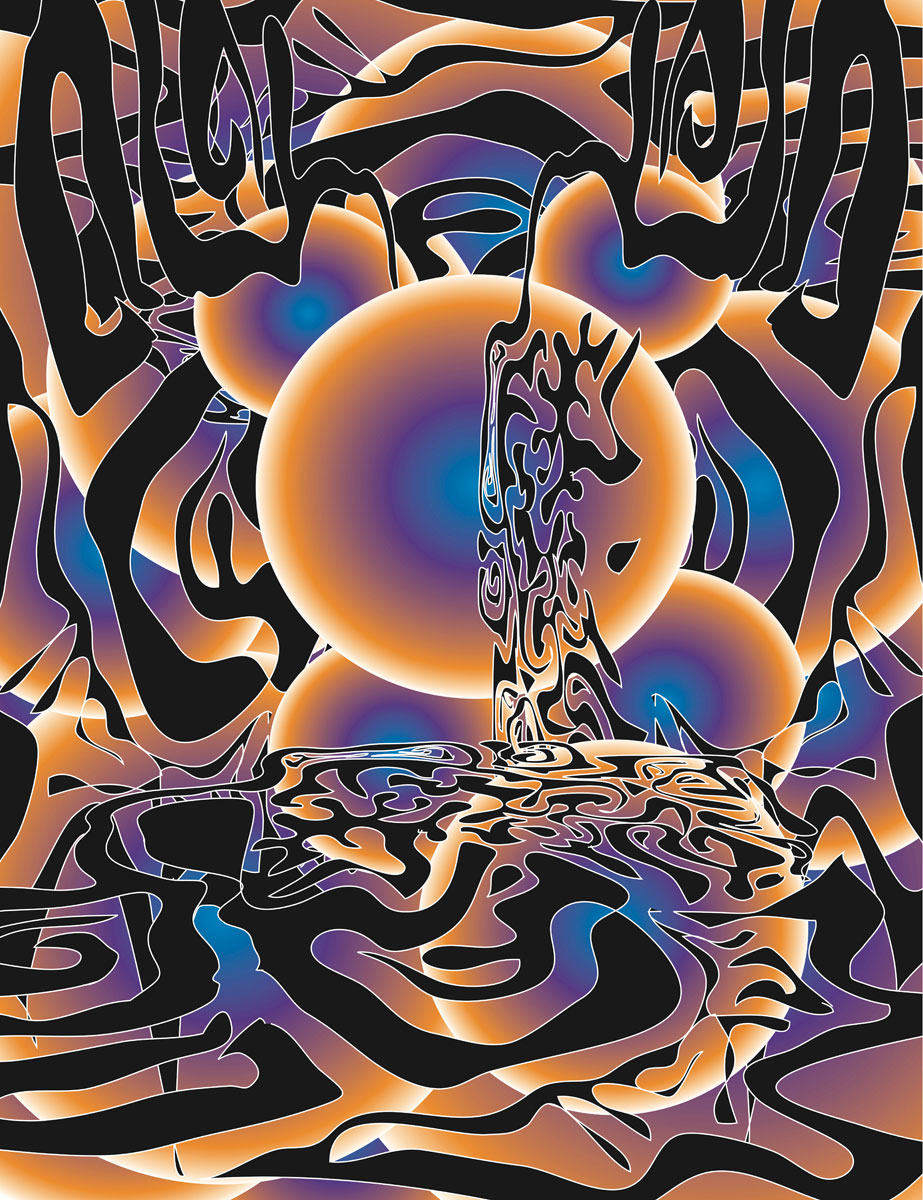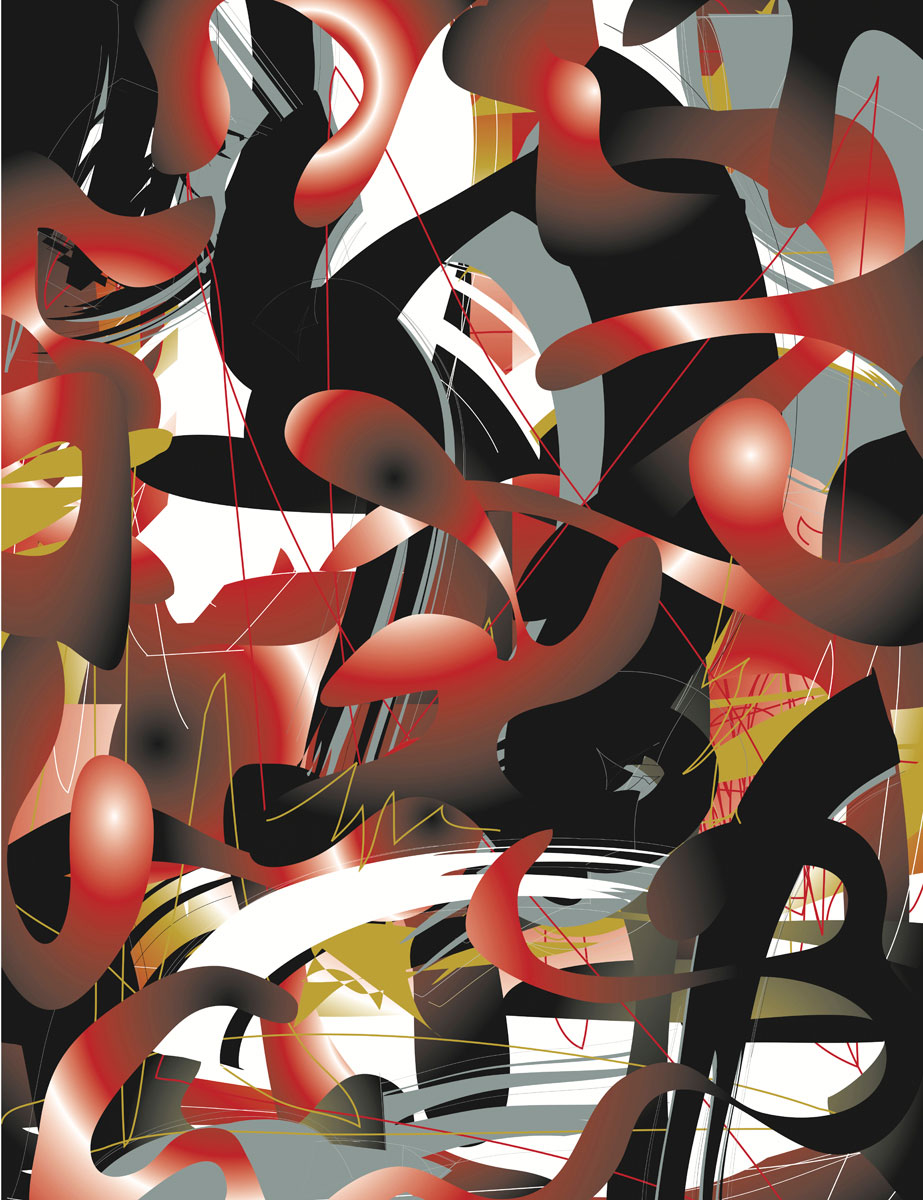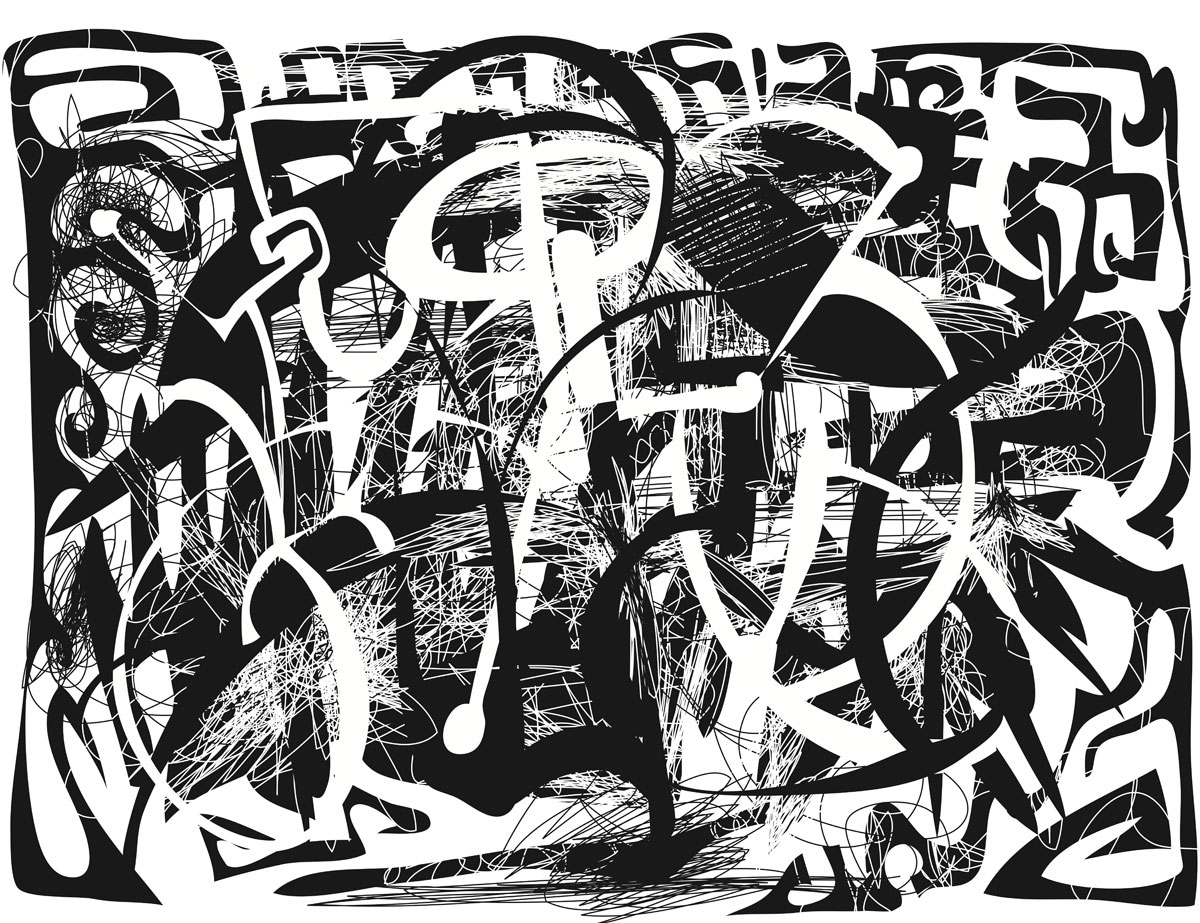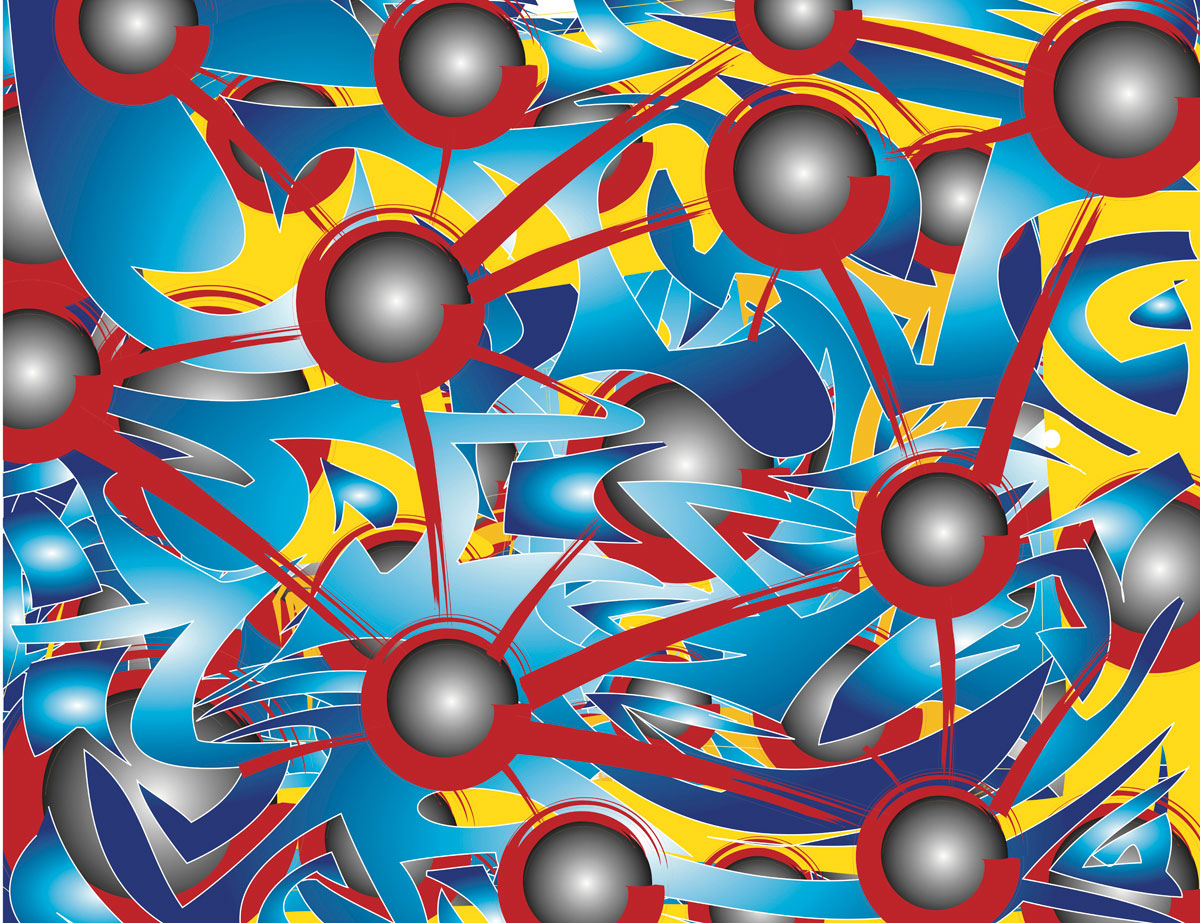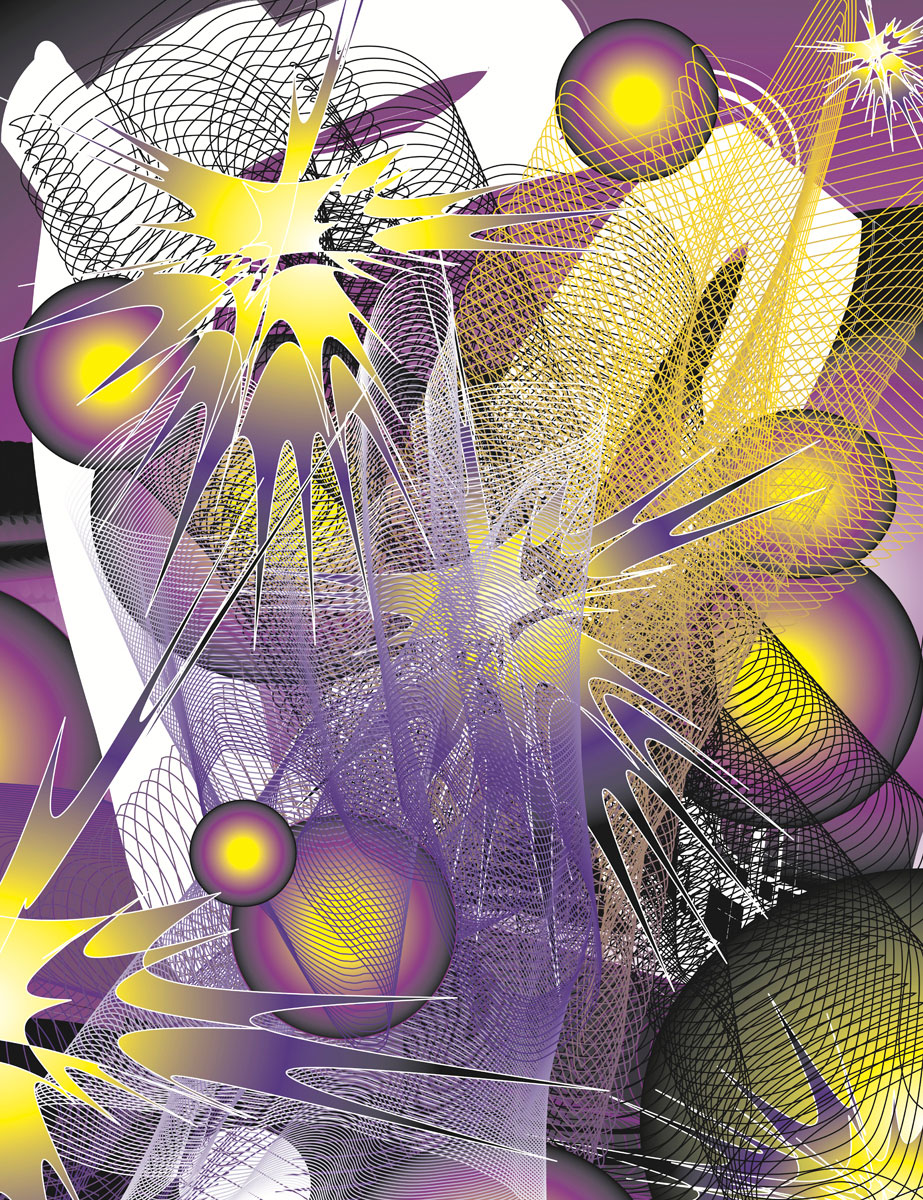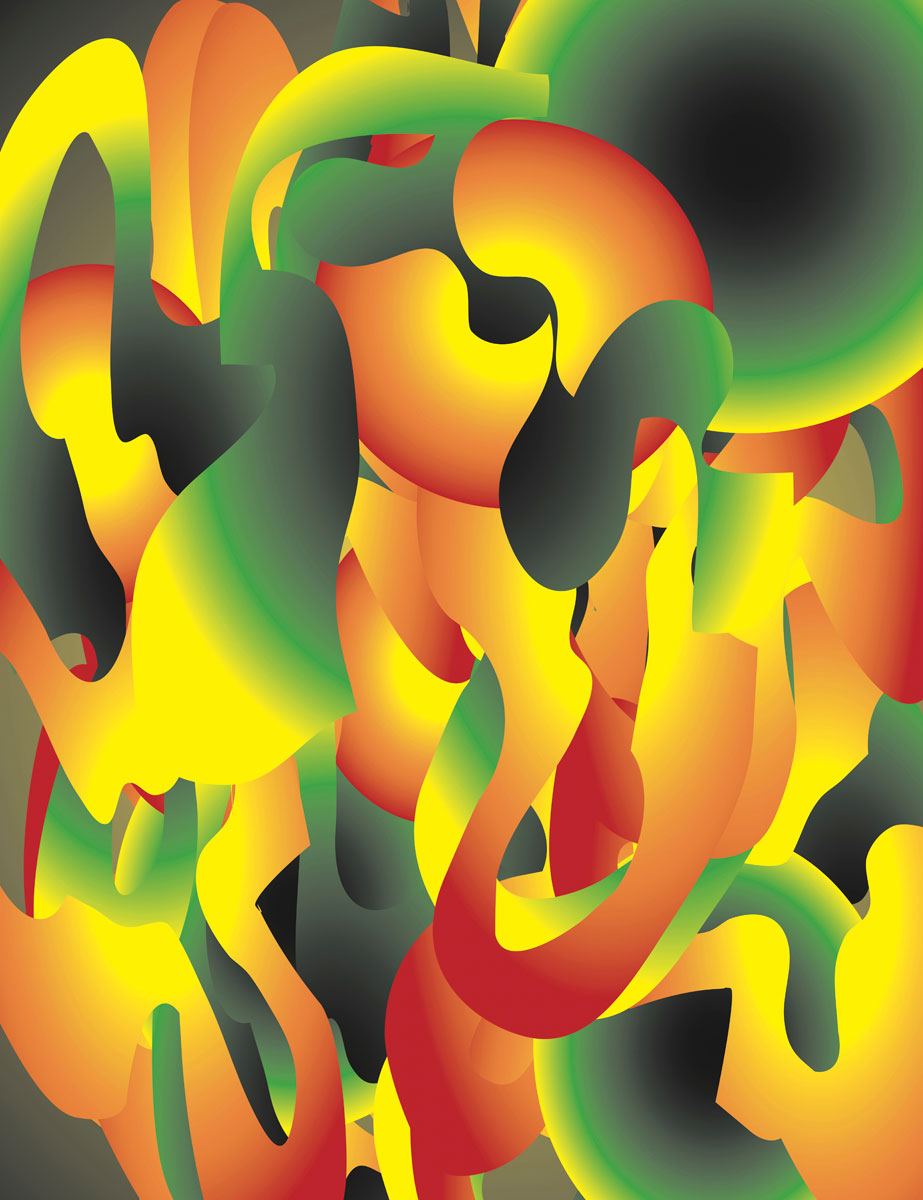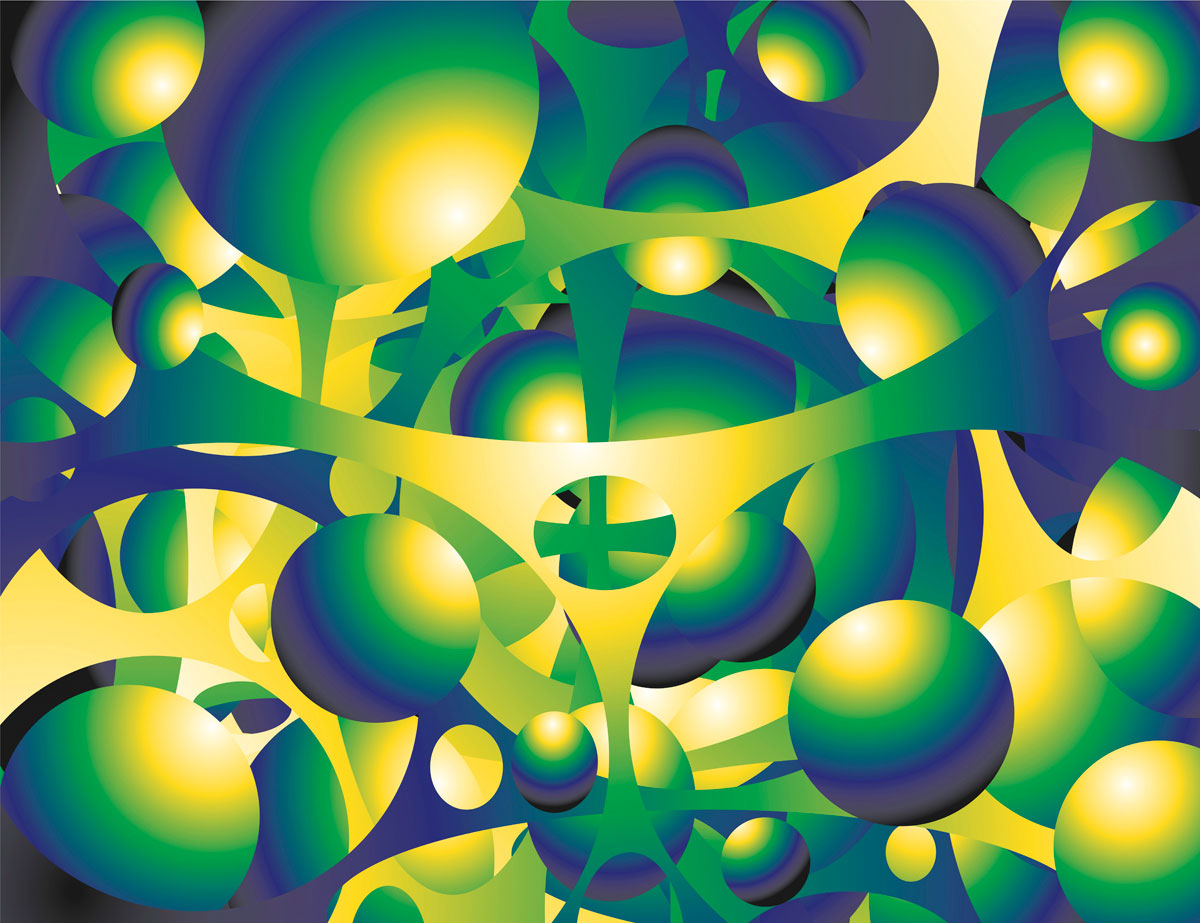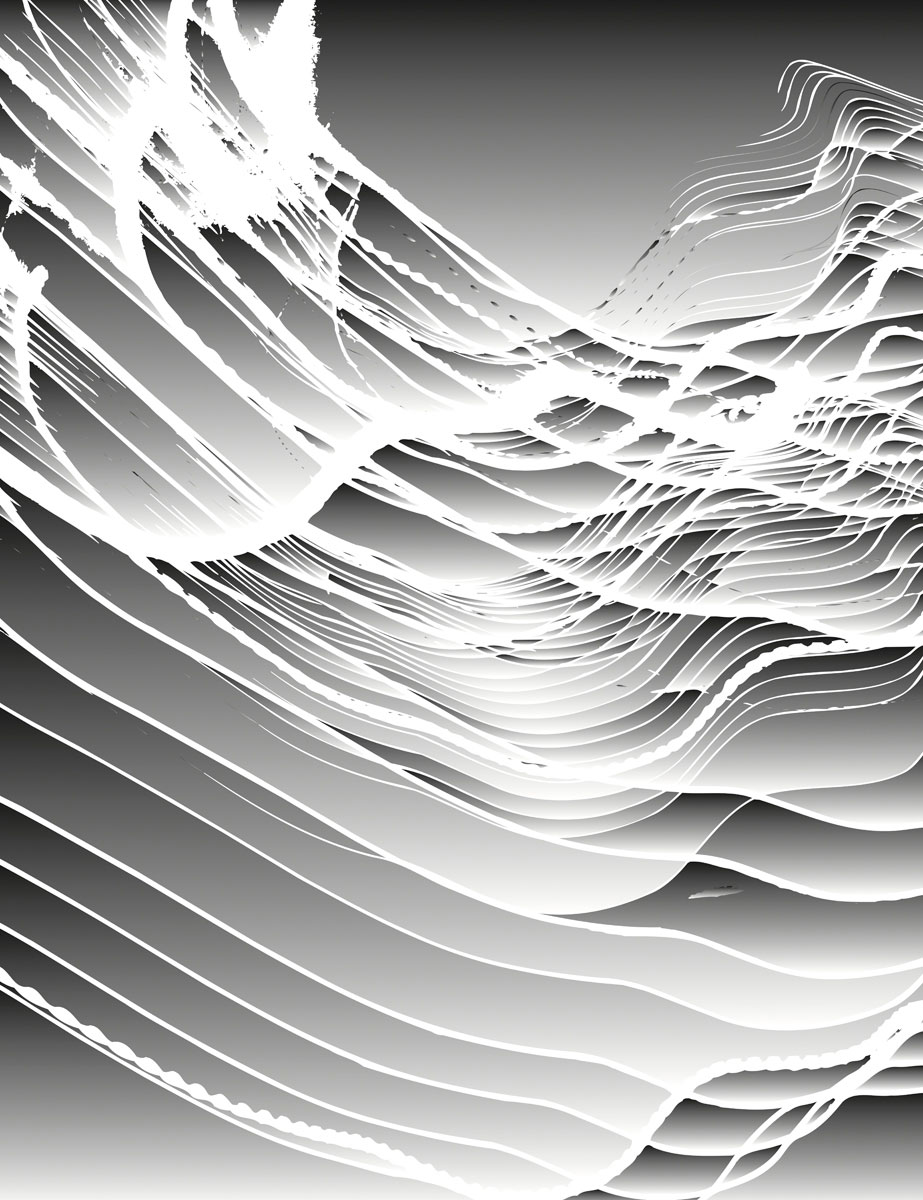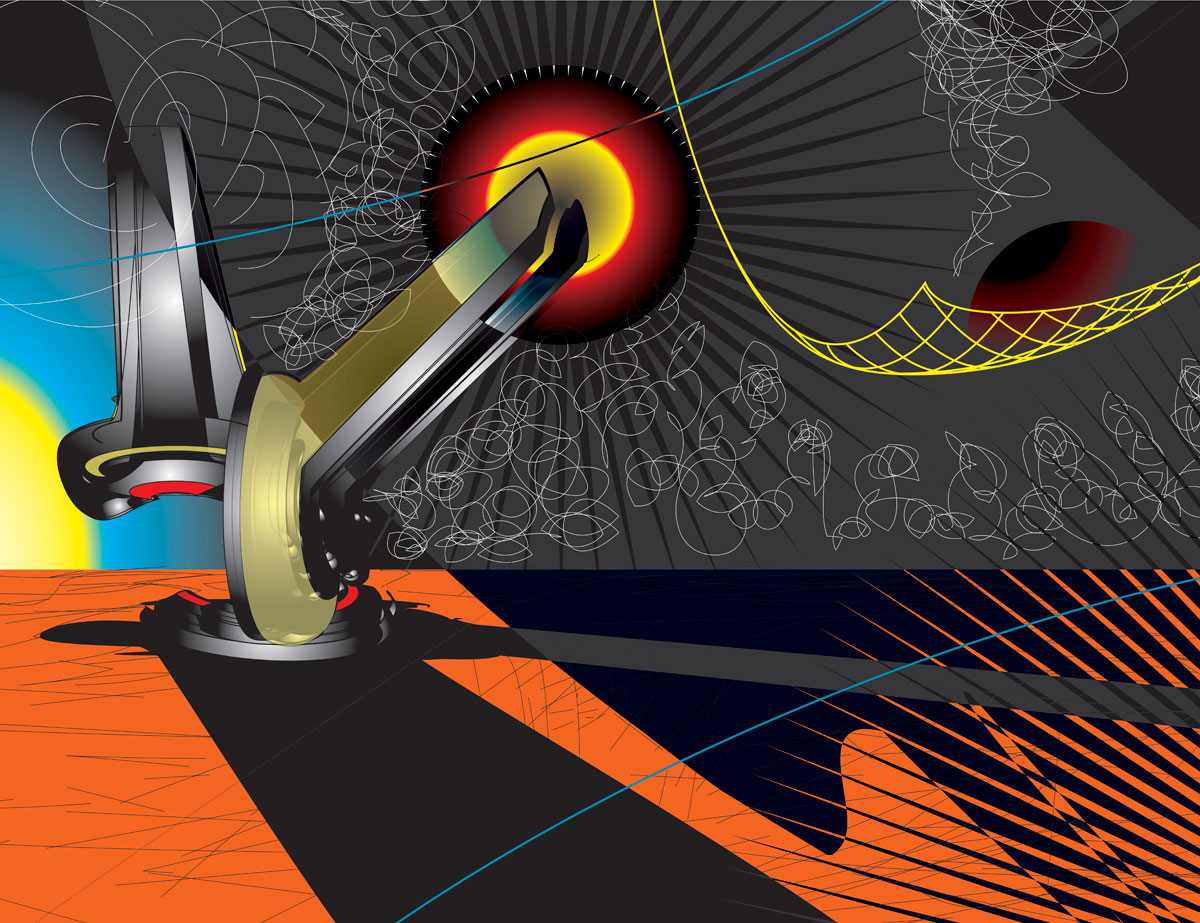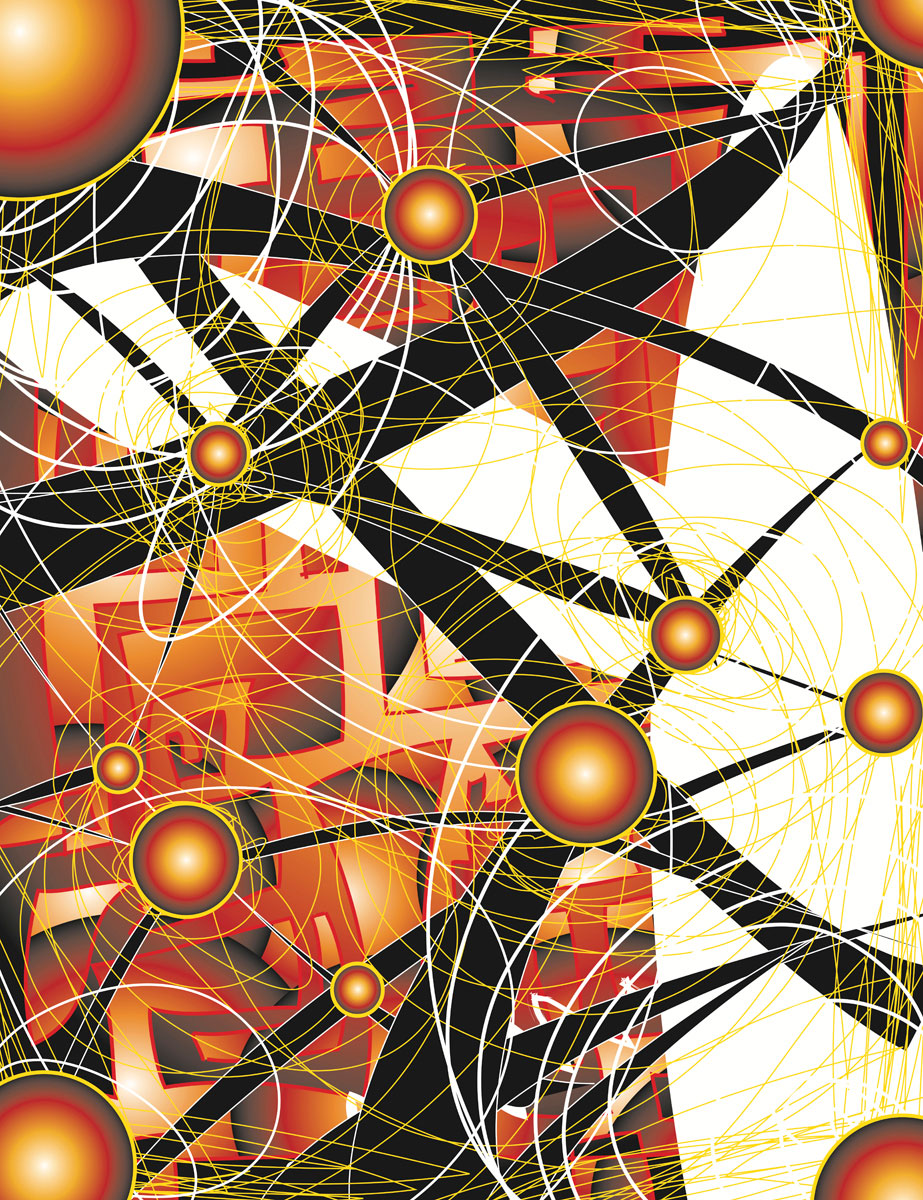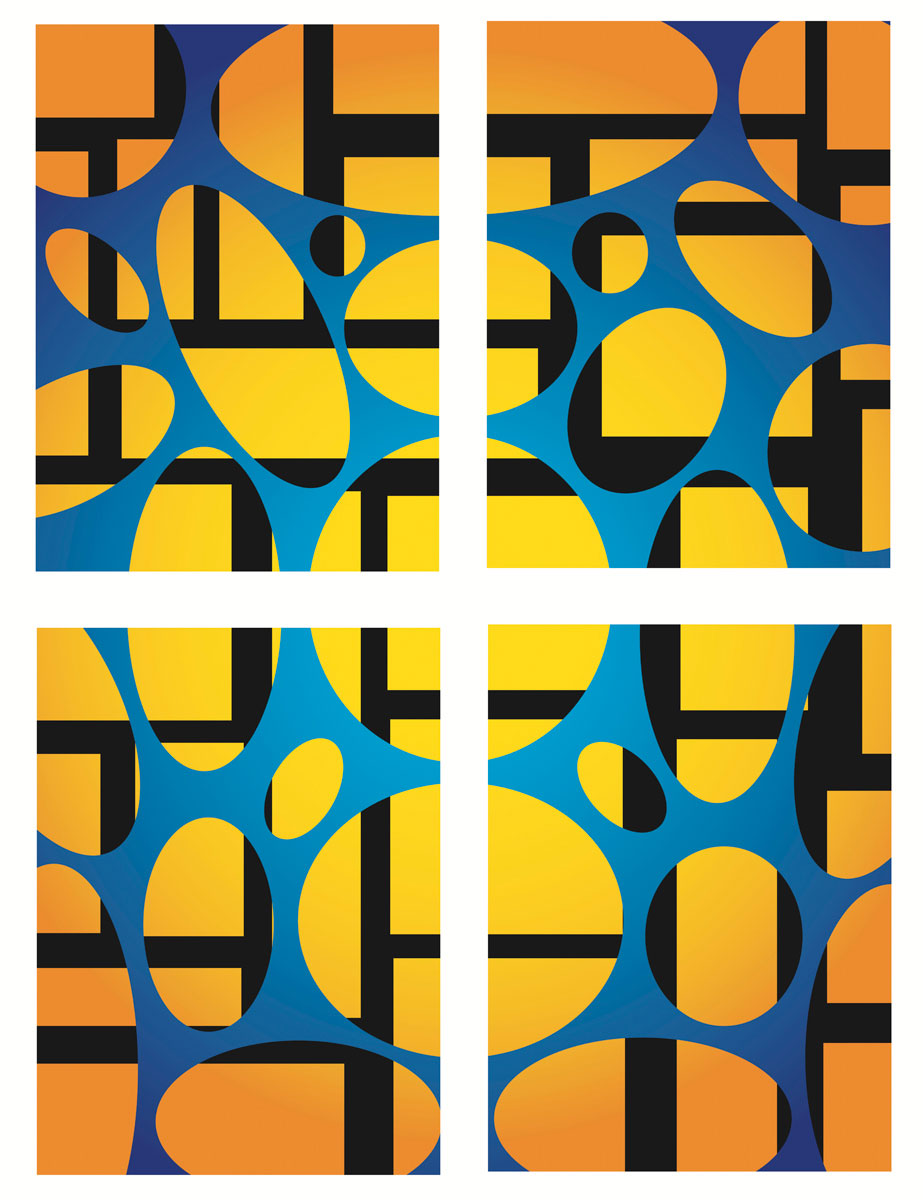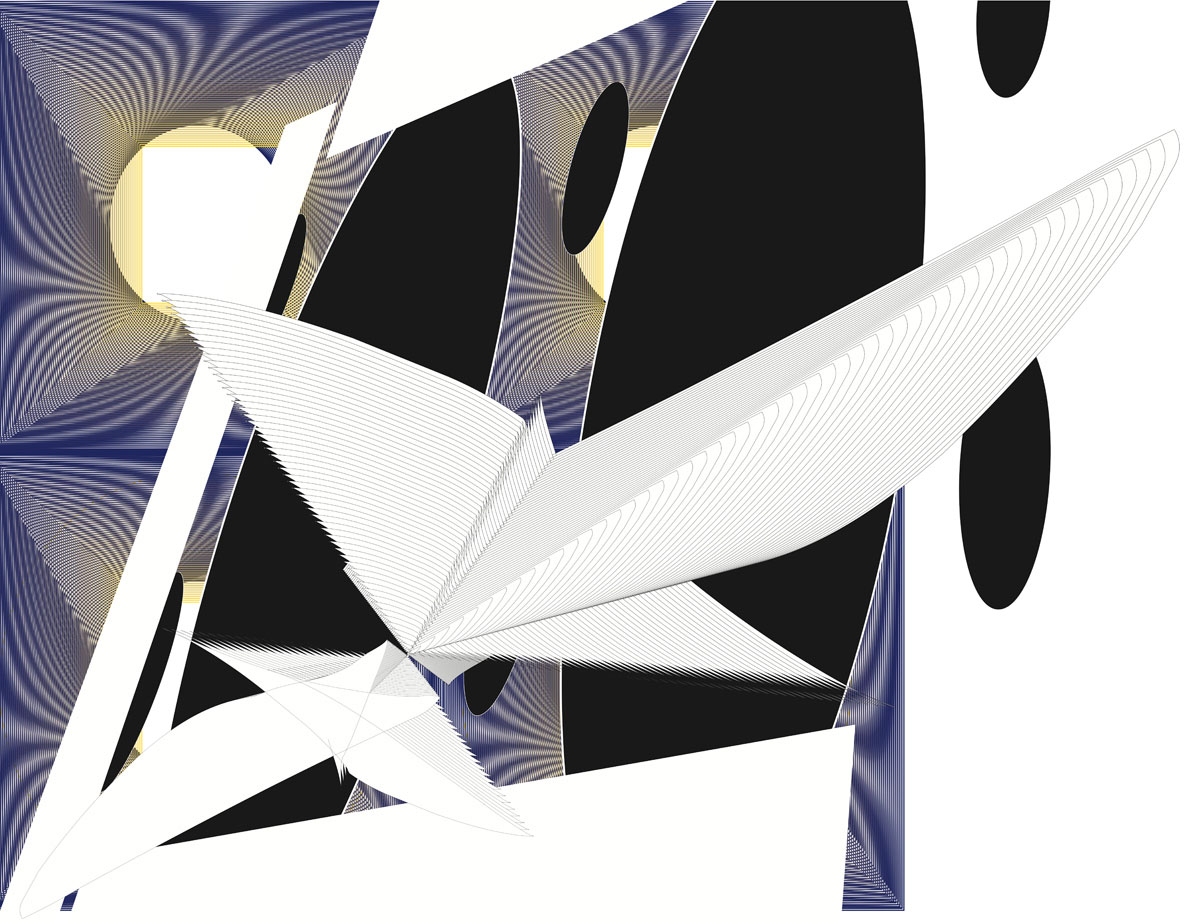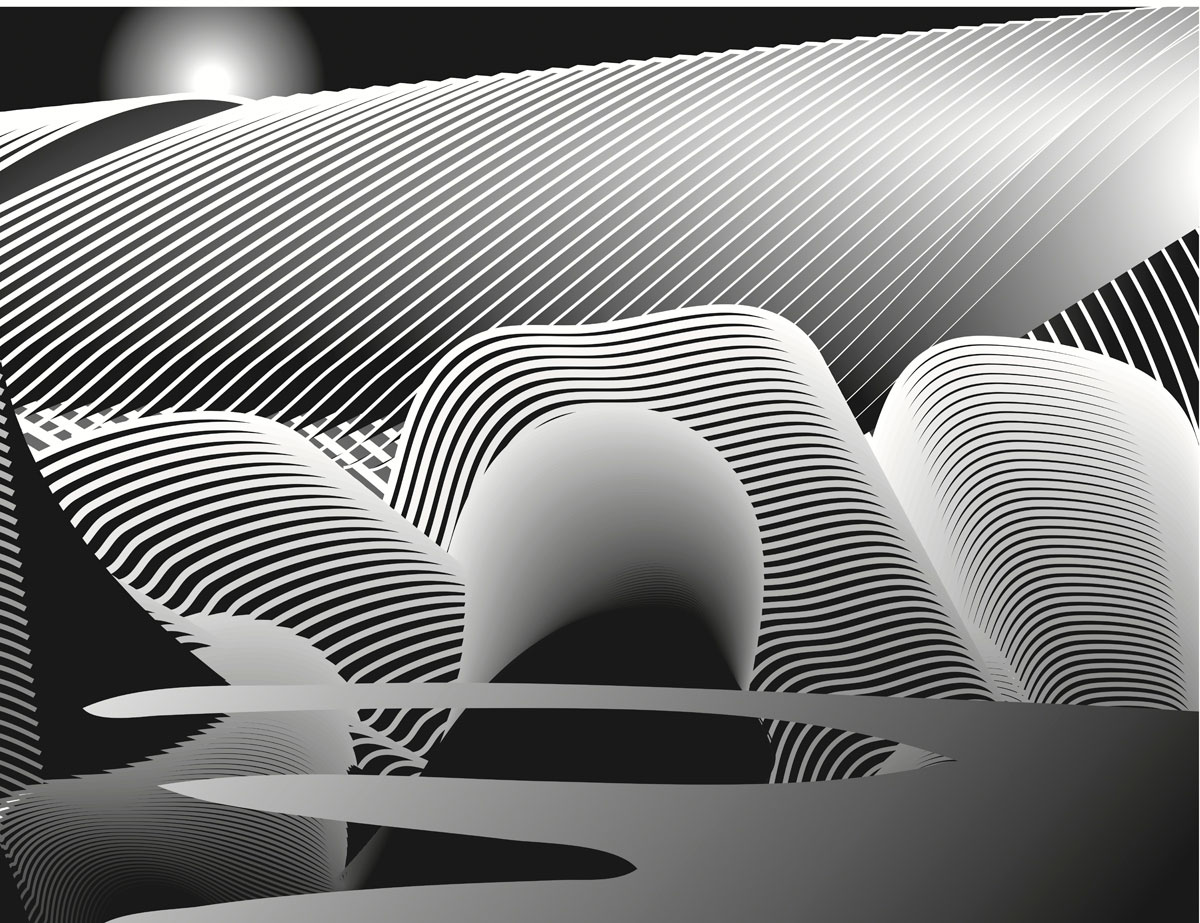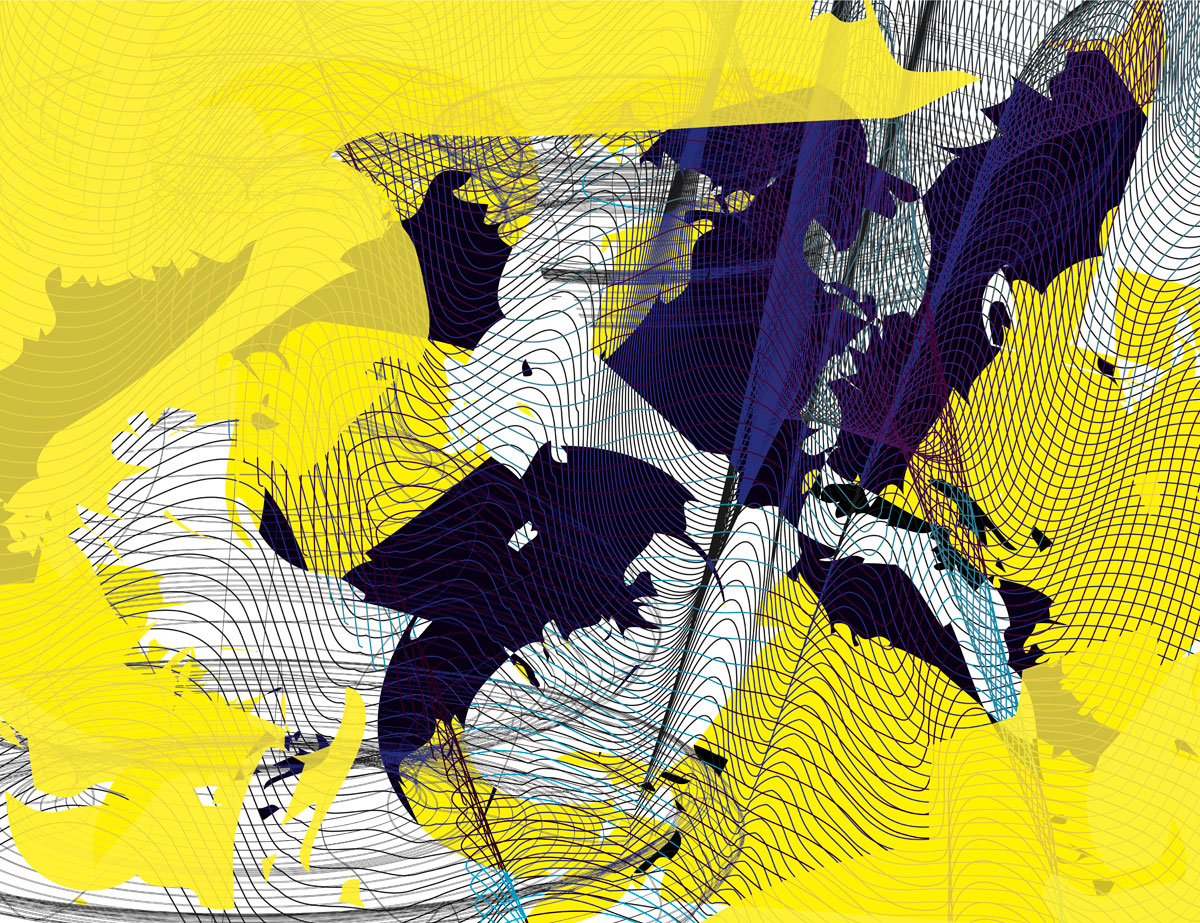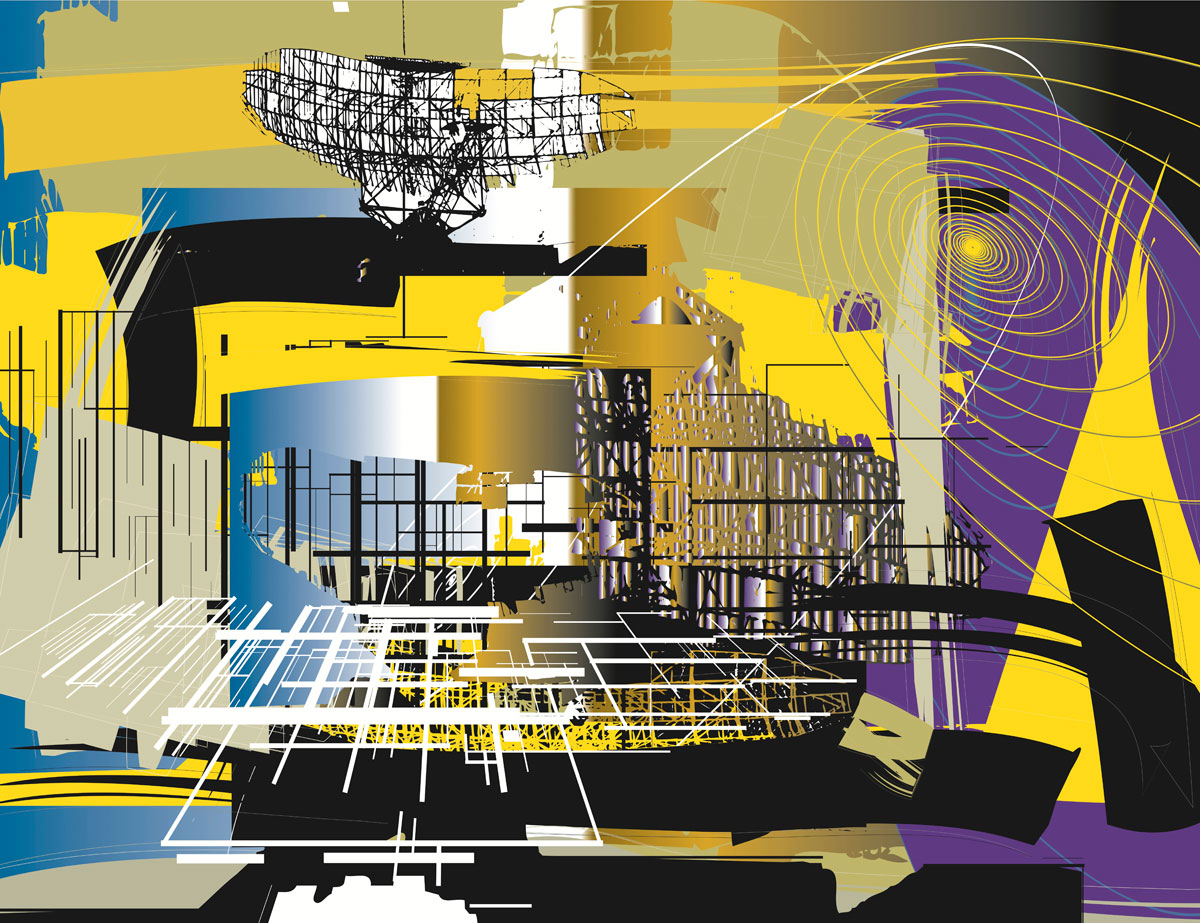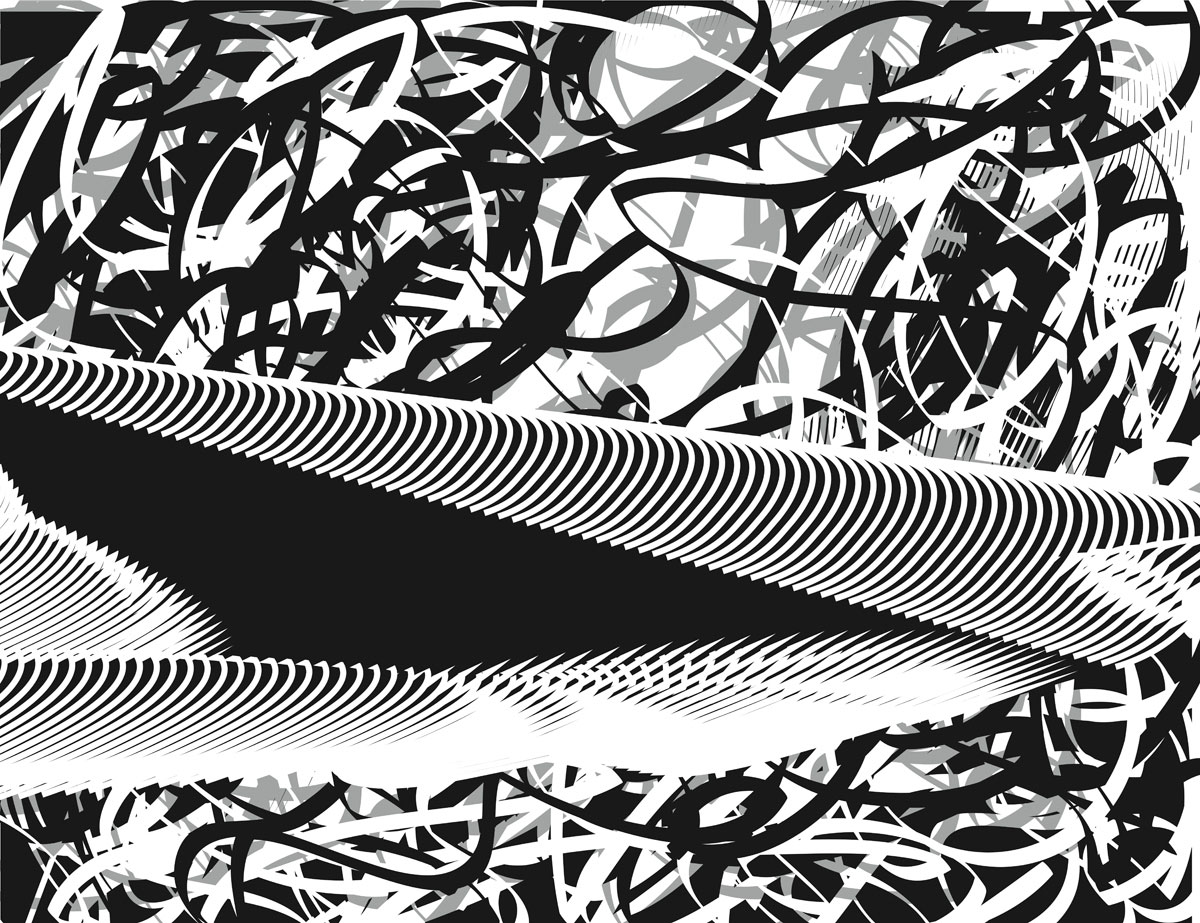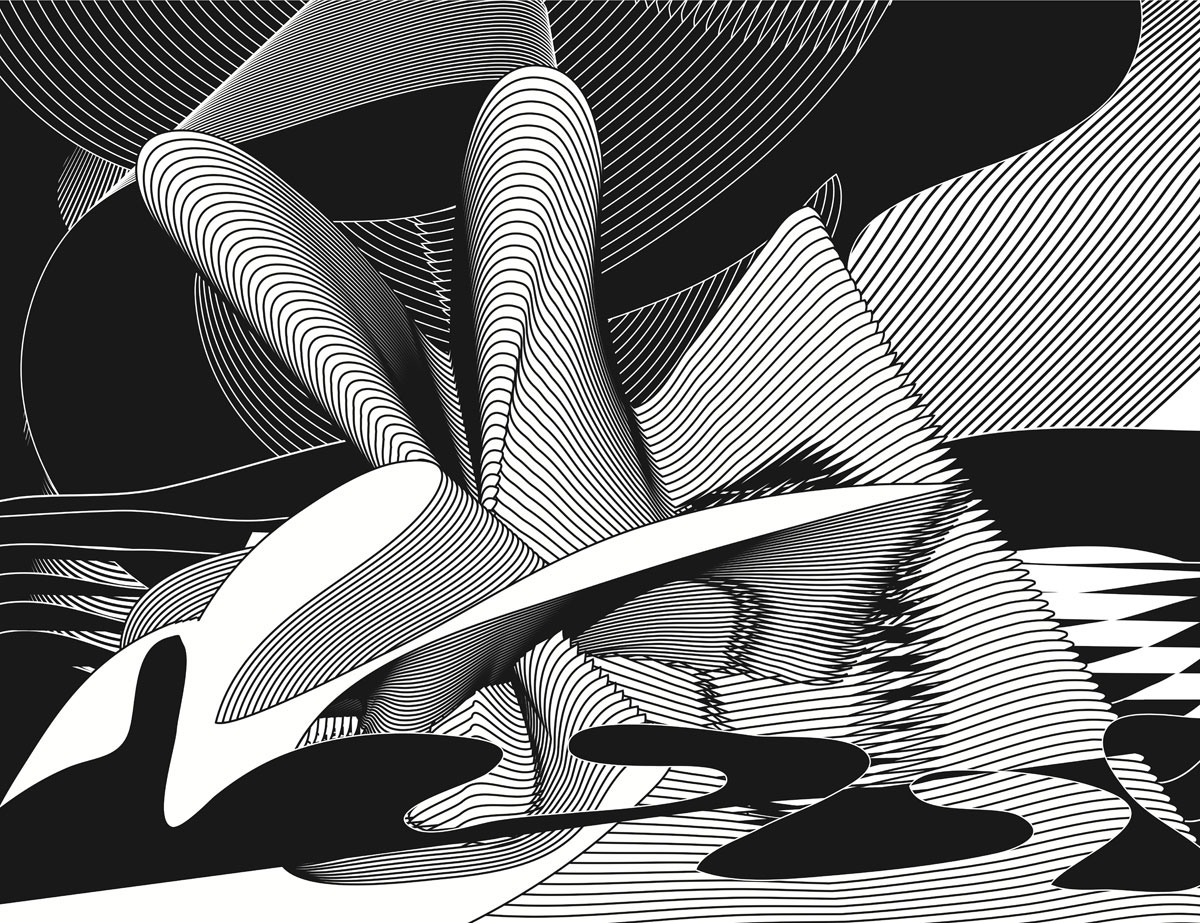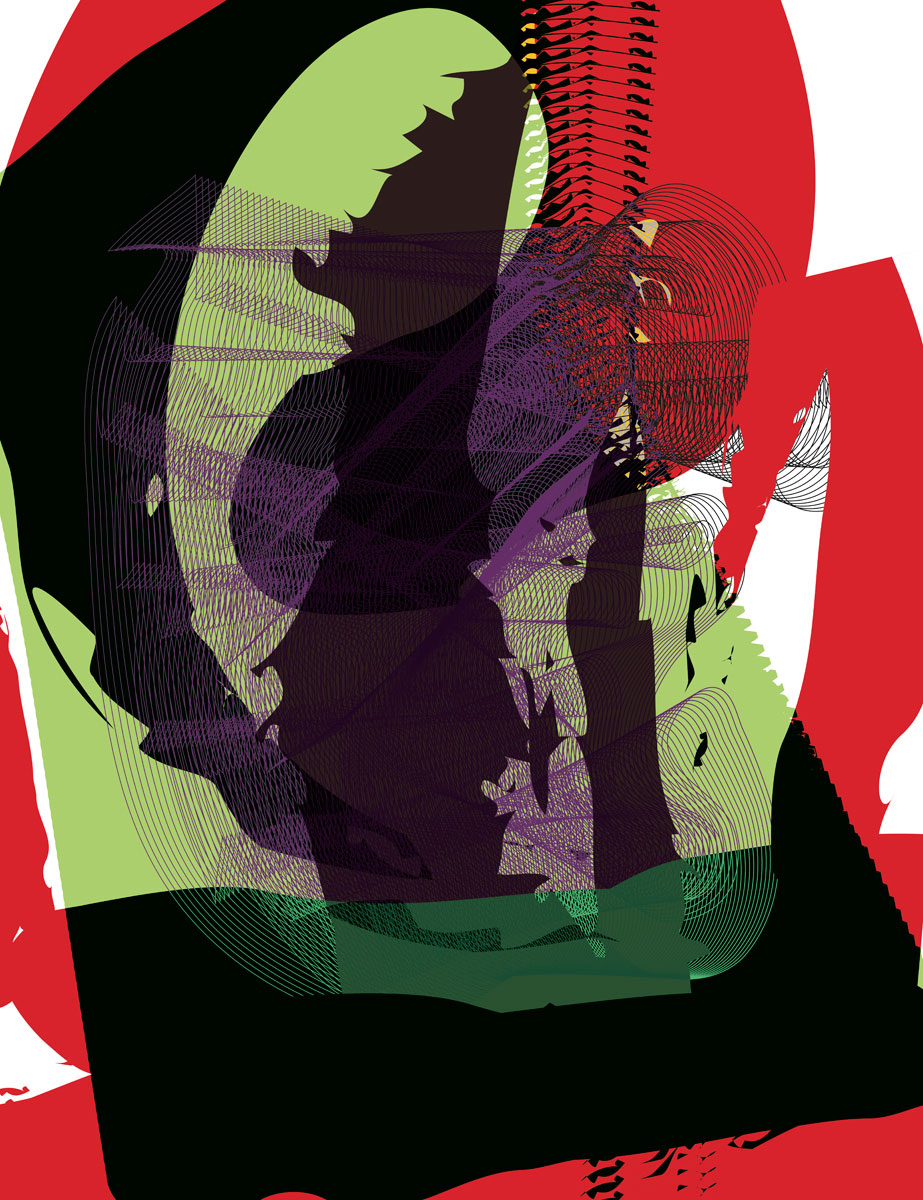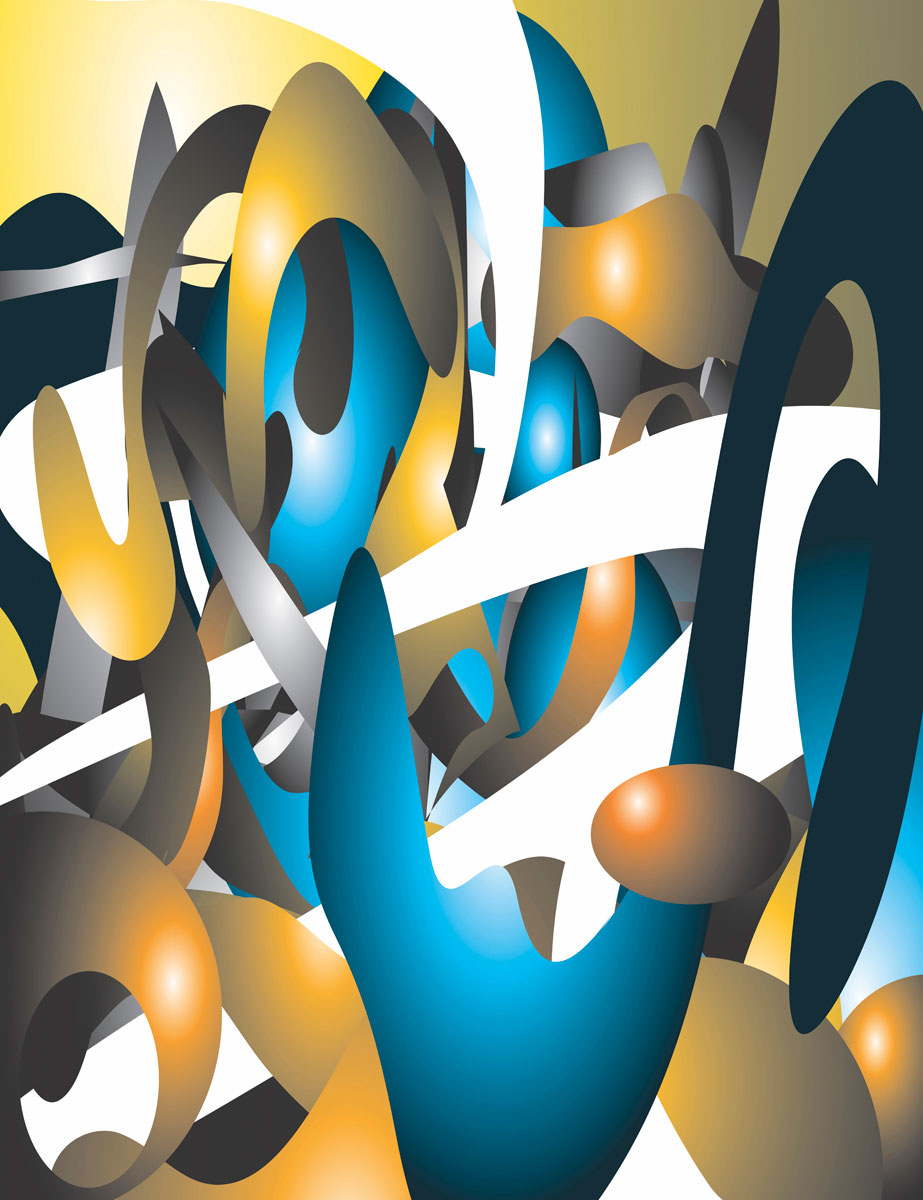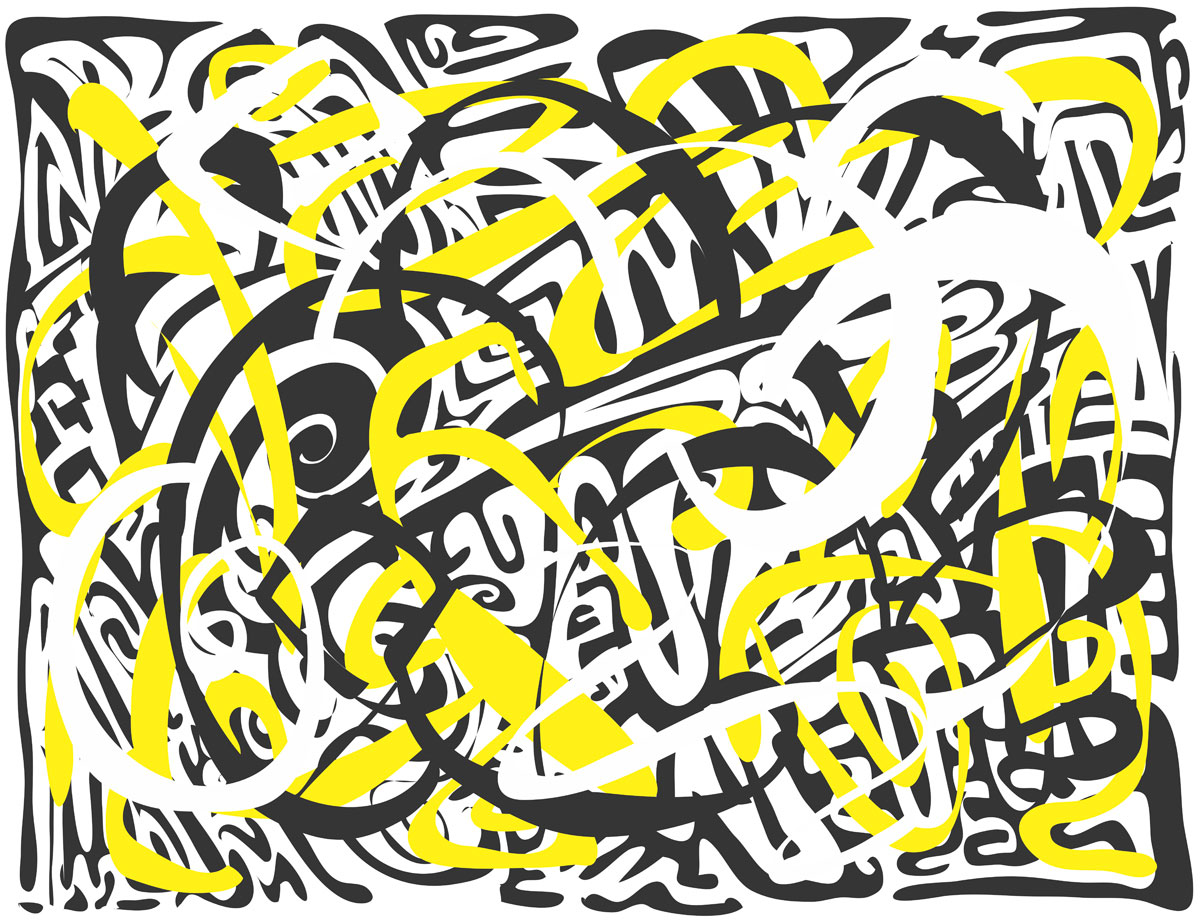
I refer to the body of work represented in this series as Metagraphs. They are selections from an ongoing series of abstract digital drawings begun in 1999 when I was living in New York’s East Village on Avenue A. The pieces were created using a graphics tablet and stylus using vector-based graphics software.
Vector-based graphics represent each line, color, and shape mathematically instead of in a grid of pixels. The majority of digital images, such as those created with a digital camera, are referred to as ‘bitmap’ images, which use the more common grid representation; this results in a finite resolution – they are ‘pixellated’ when enlarged past a certain size. Vector-based graphics allow for infinite resolution and scalability to any size. This is what allows the canvasses to contain such sharp lines when printed at a large scale.
The name “Metagraph” stems from the concept of the actual artwork being, in essence, code which represents the color, geometry, and curves that the machine records from the movements of the pen on the tablet. Thus the compostitions are ‘meta-representations’ which are manifested physically into an object, rather than a physical object which is reproduced digitally, such as the ‘Giclée Print’ (in its traditional usage).
Each Metagraph is produced as a singular 3×4 foot archival ink on canvas and an edition of signed and numbered inks, archivally printed at with an image size of 10×13 inches on Hahnemühle Museum Etching paper. The works on paper are sized to fit within a 16×20 mat with an 11×14 window, leaving 1/2 inch of space around the image to allow for the signature and numbering to be visible within the mat below the image.
From an art-historical perspective, these works draw broadly upon two traditions – the idea of ‘automatism’ and the use of industrial materials and processes within a fine-art context. The idea of automatism, which started with the Surrealists and continued with Abstract Expressionists such as Pollock, is based around the use of the subconscious to generate subject matter, which in this case, is fully non-representational. The works are titled once complete using free association.
The use of industrial materials continues in the tradition of Warhol and other Pop artists who recontextualized the commercial techniques of the time such as silkscreen printing. Today’s counterparts are technologies such as large-format digital printing and vector graphics, which are the basis for the majority of signage and branding that we encounter in today’s popular culture.
The Metagraph series has been the basis of a solo exhibition that been exhibited at the Islip Art Museum, Southampton Town Hall, and the Southampton Town Recreation Center in Southampton, NY.
